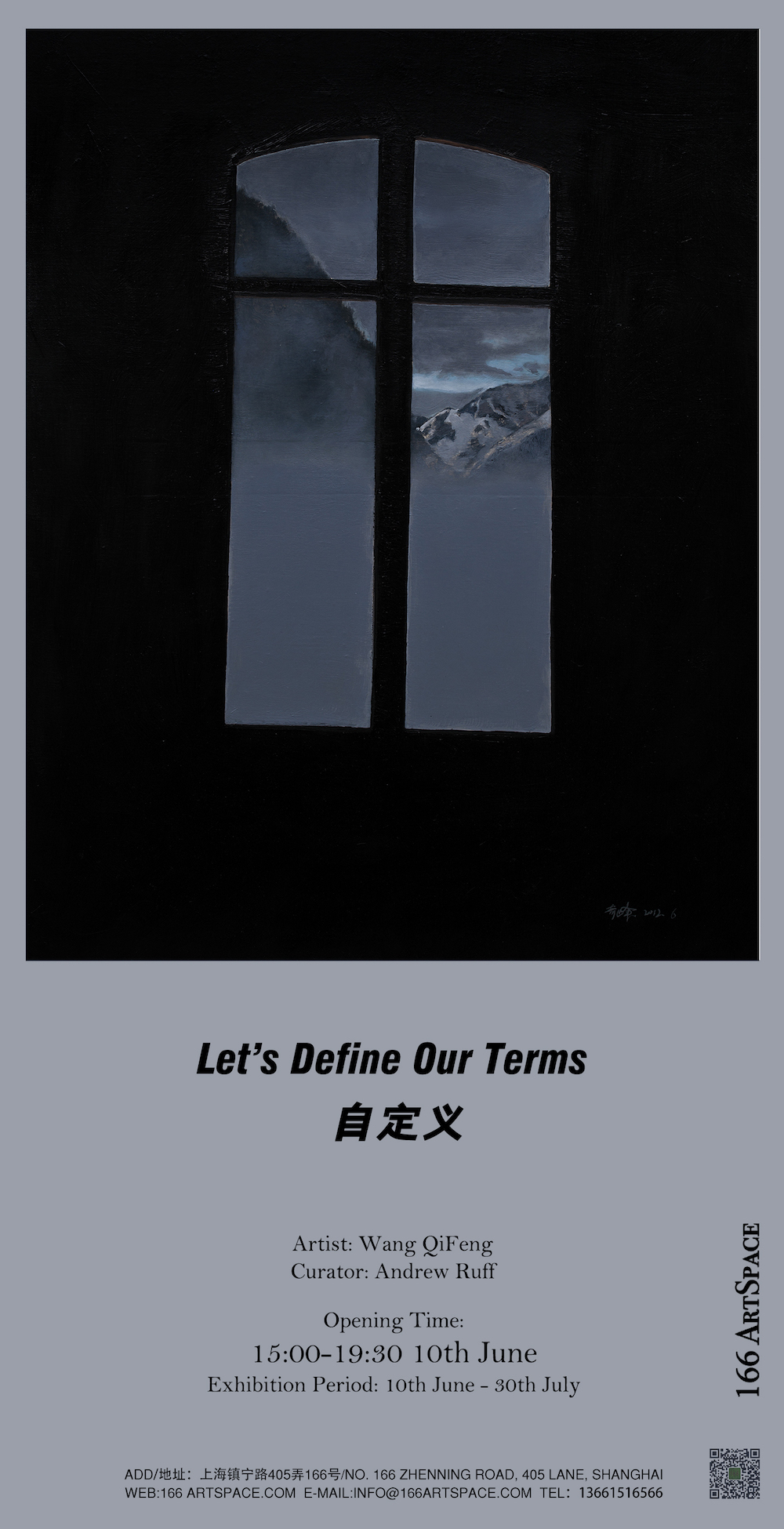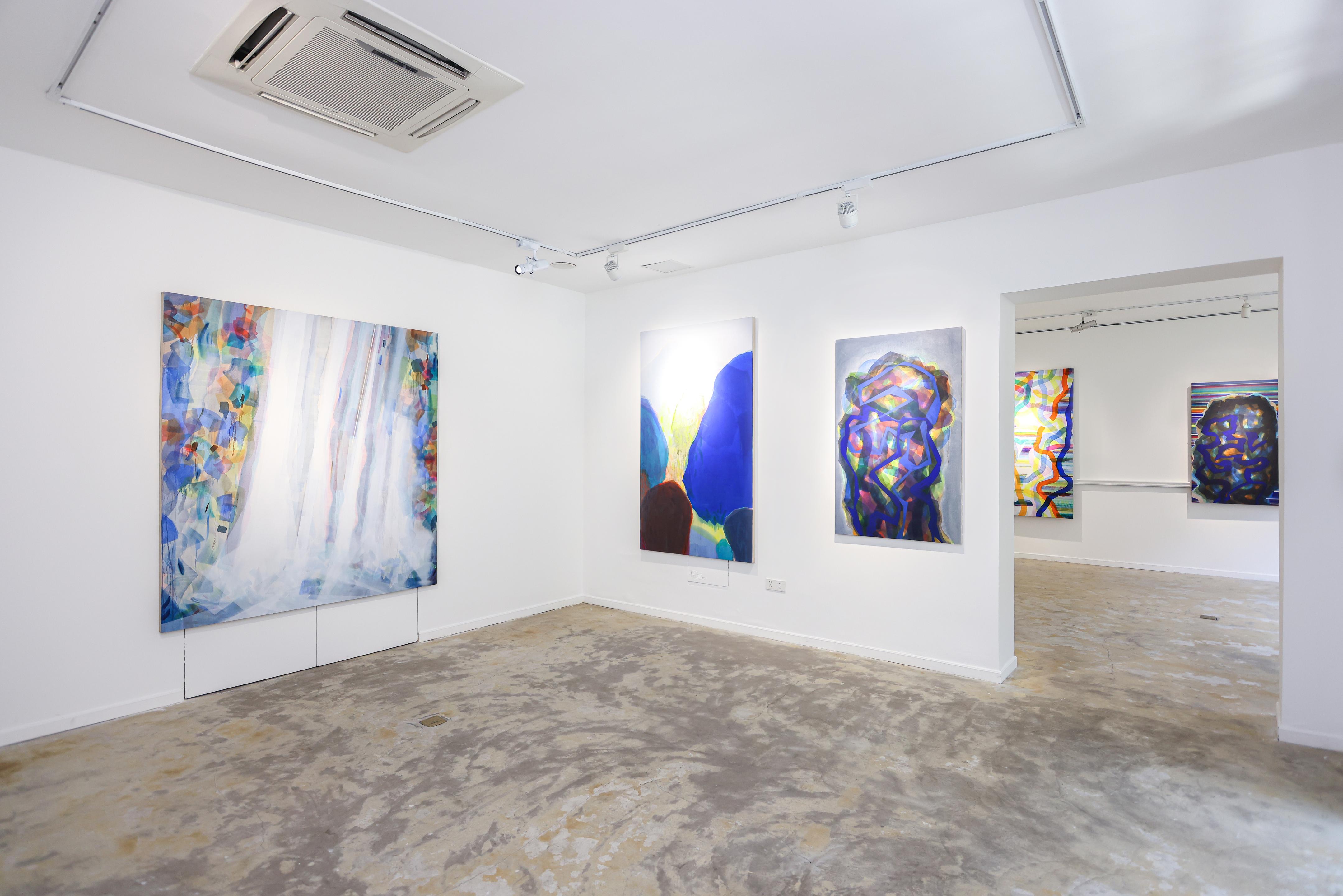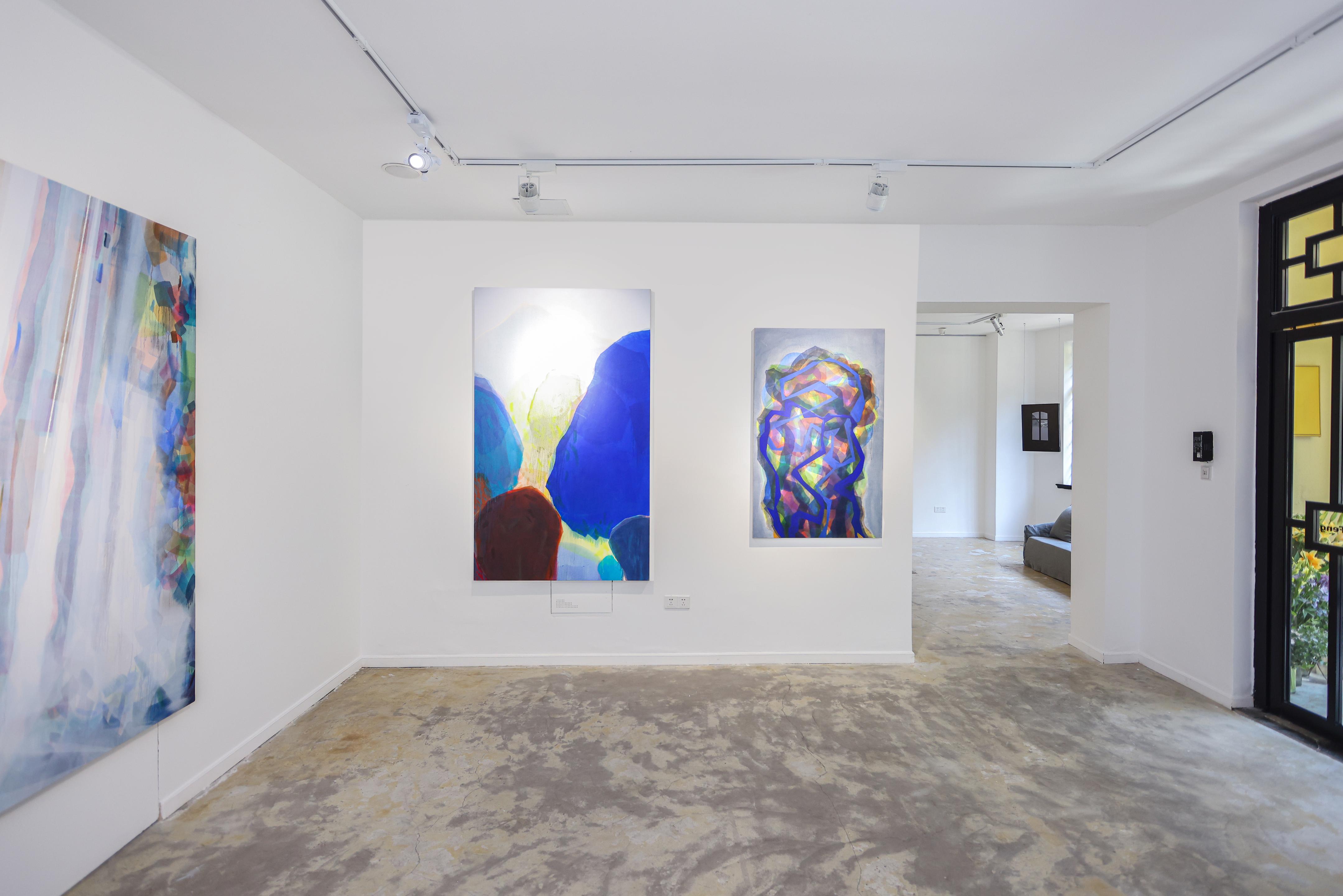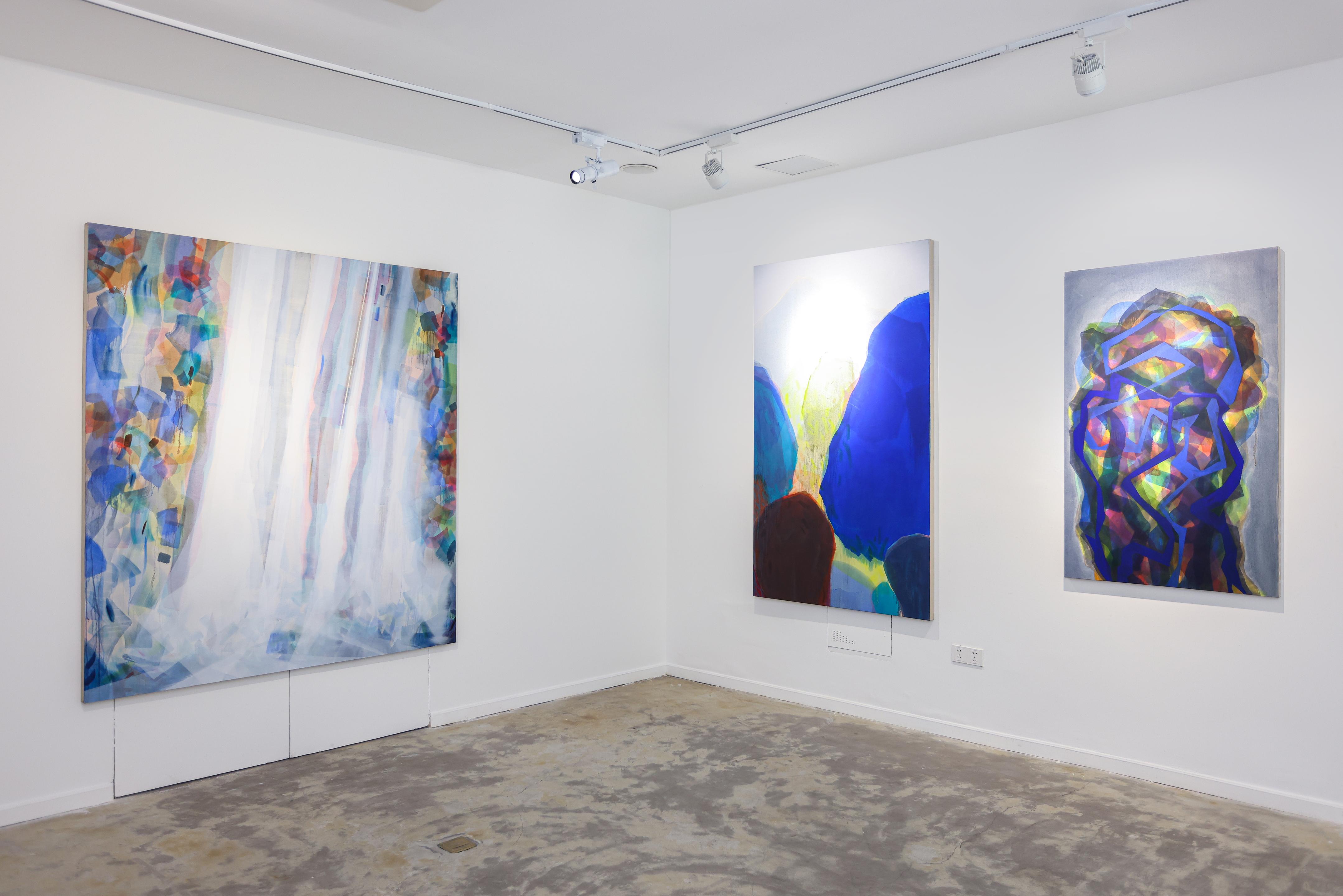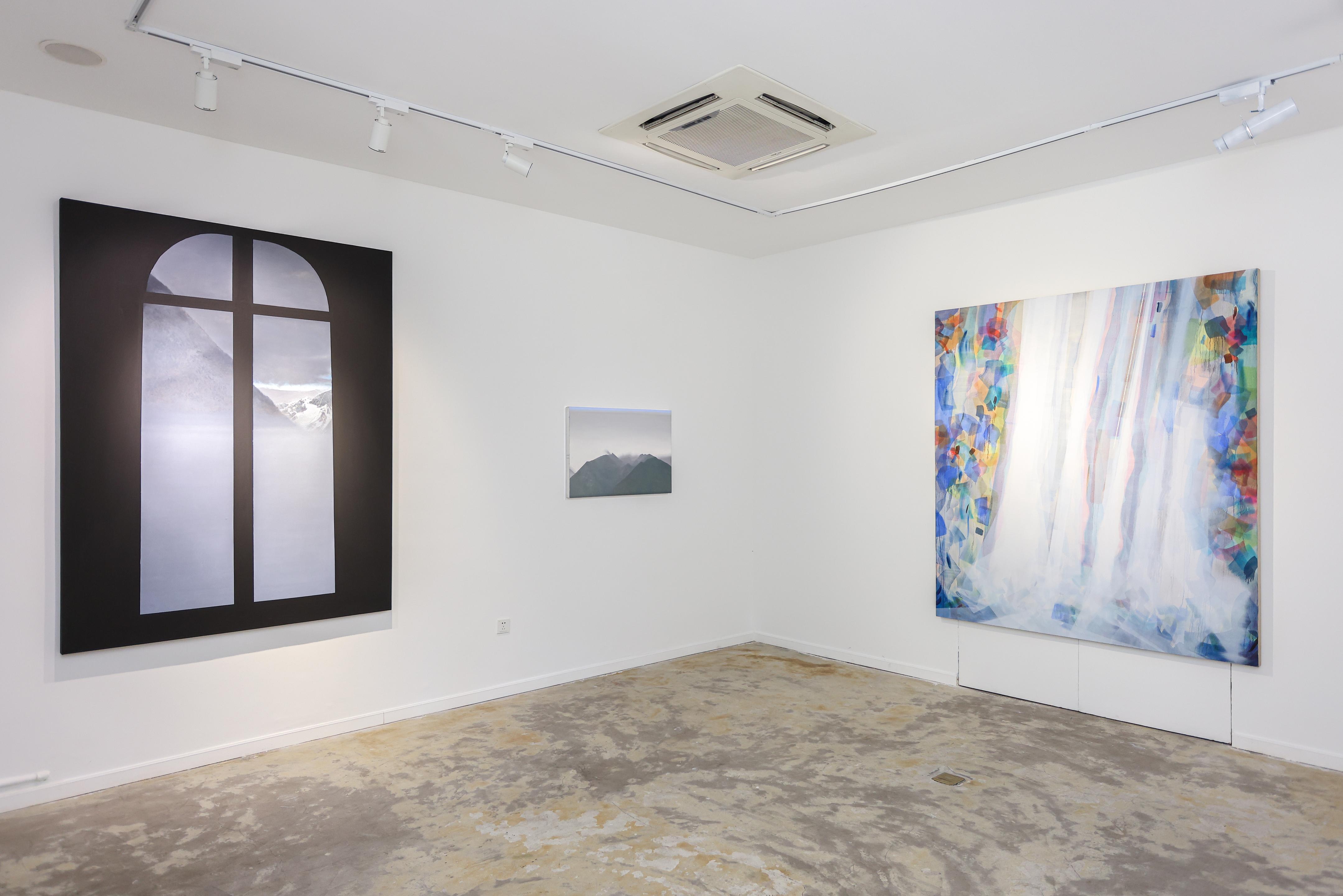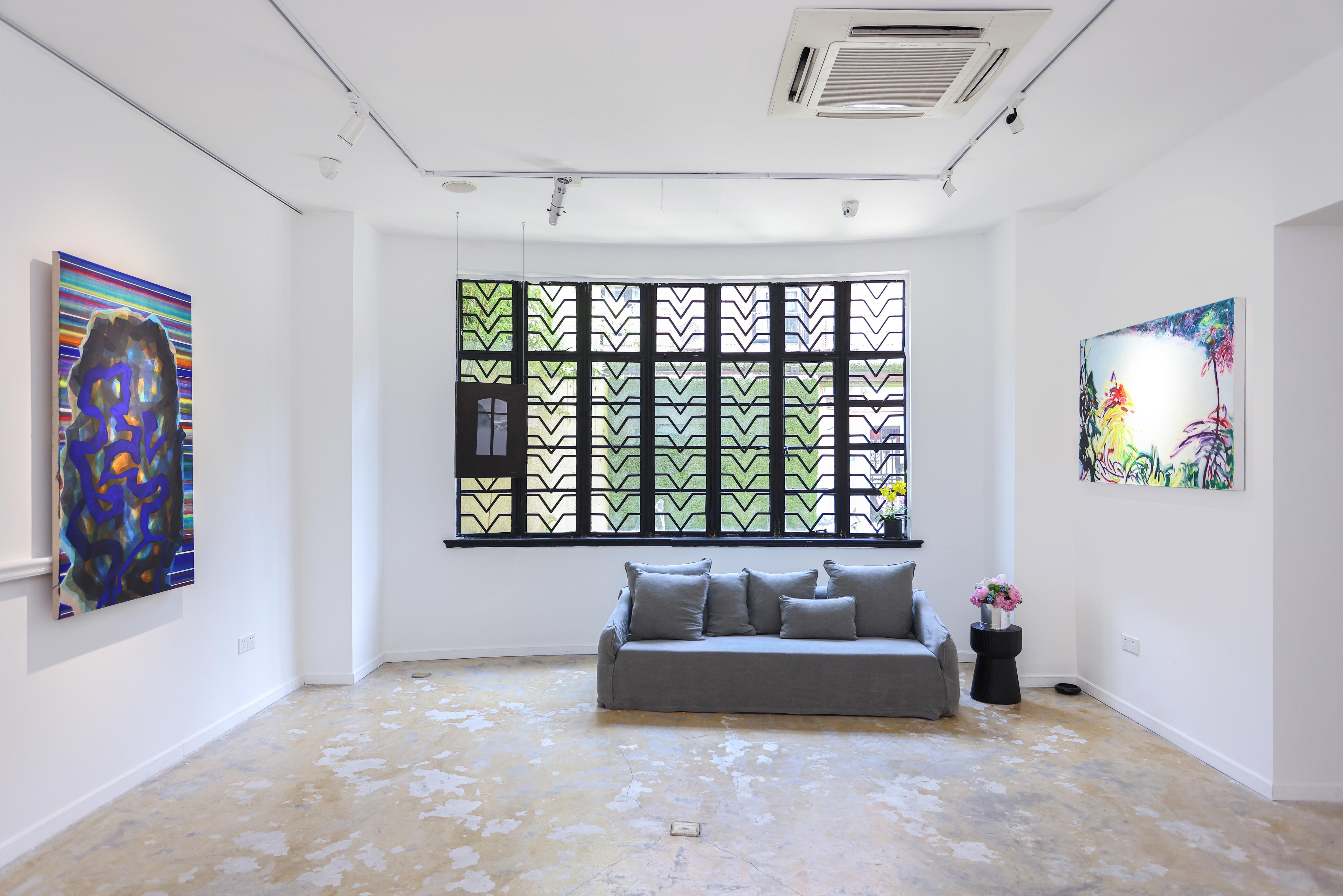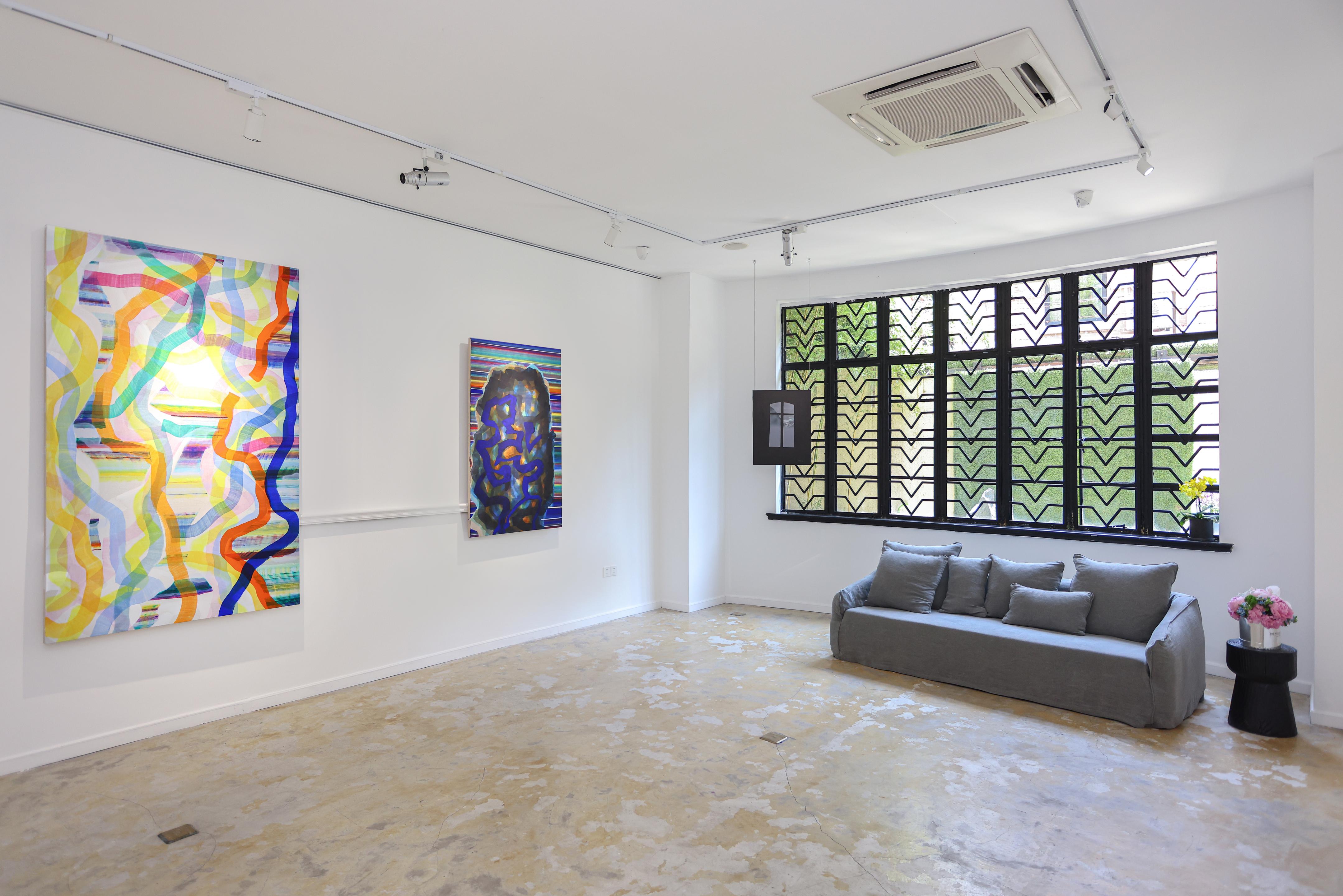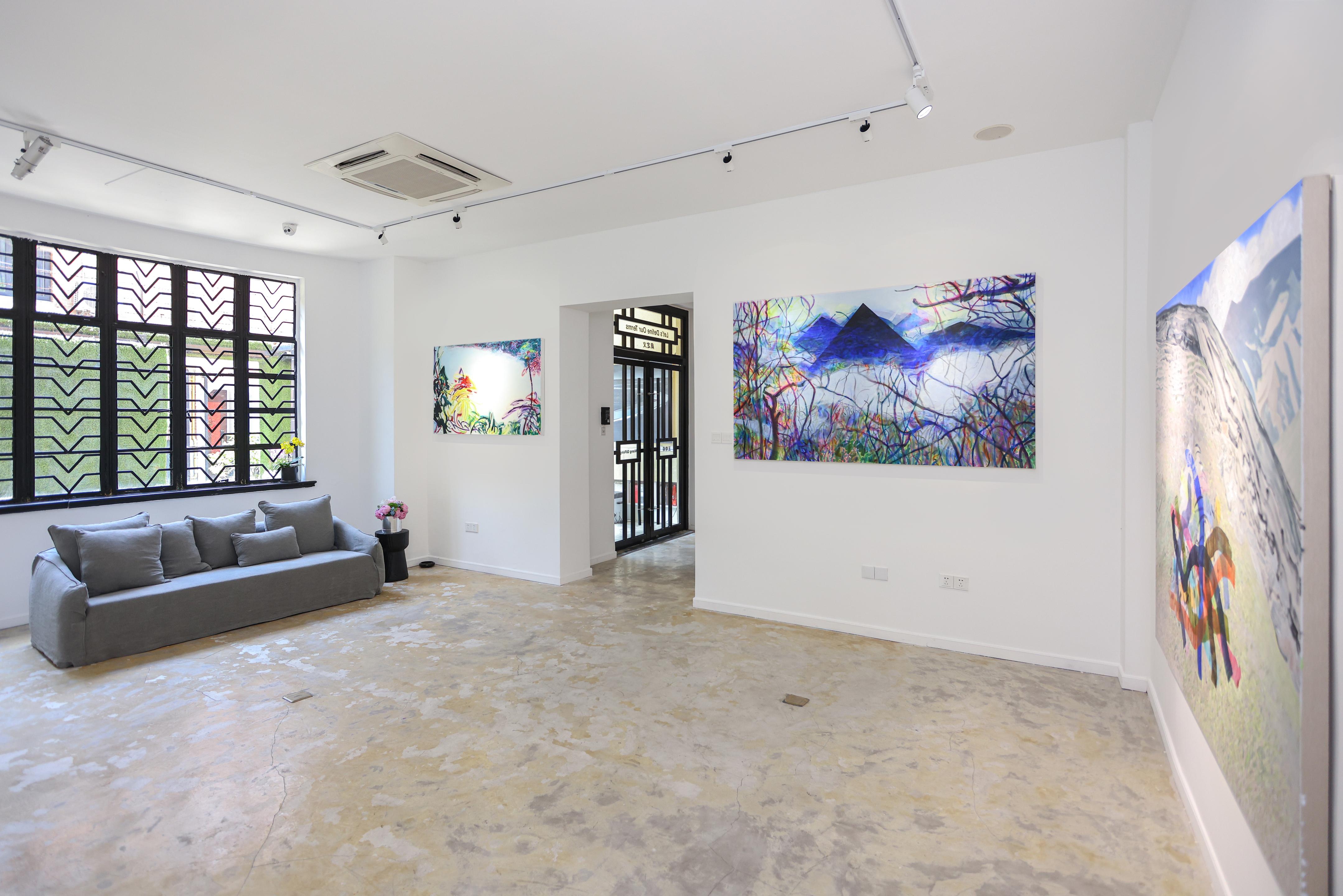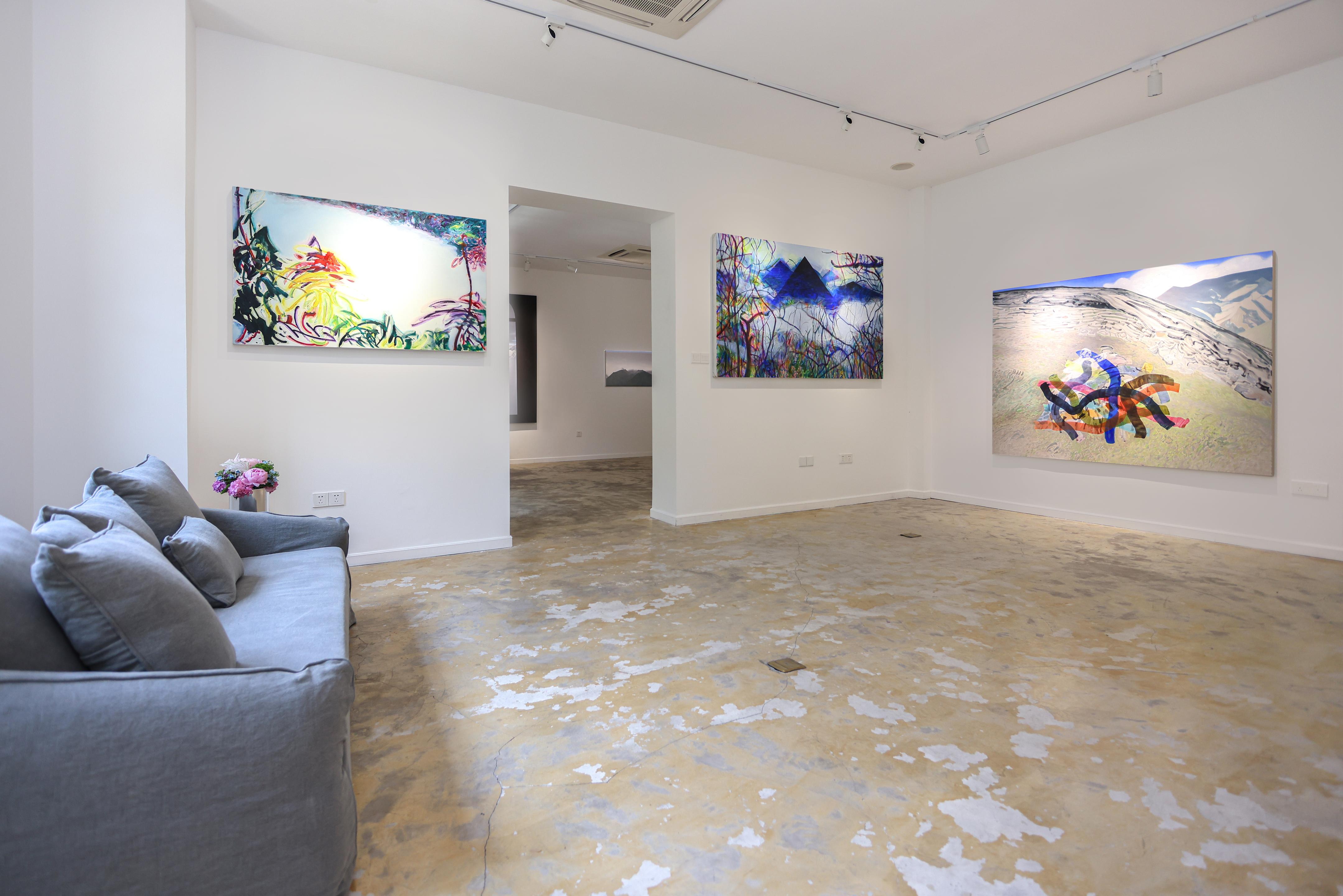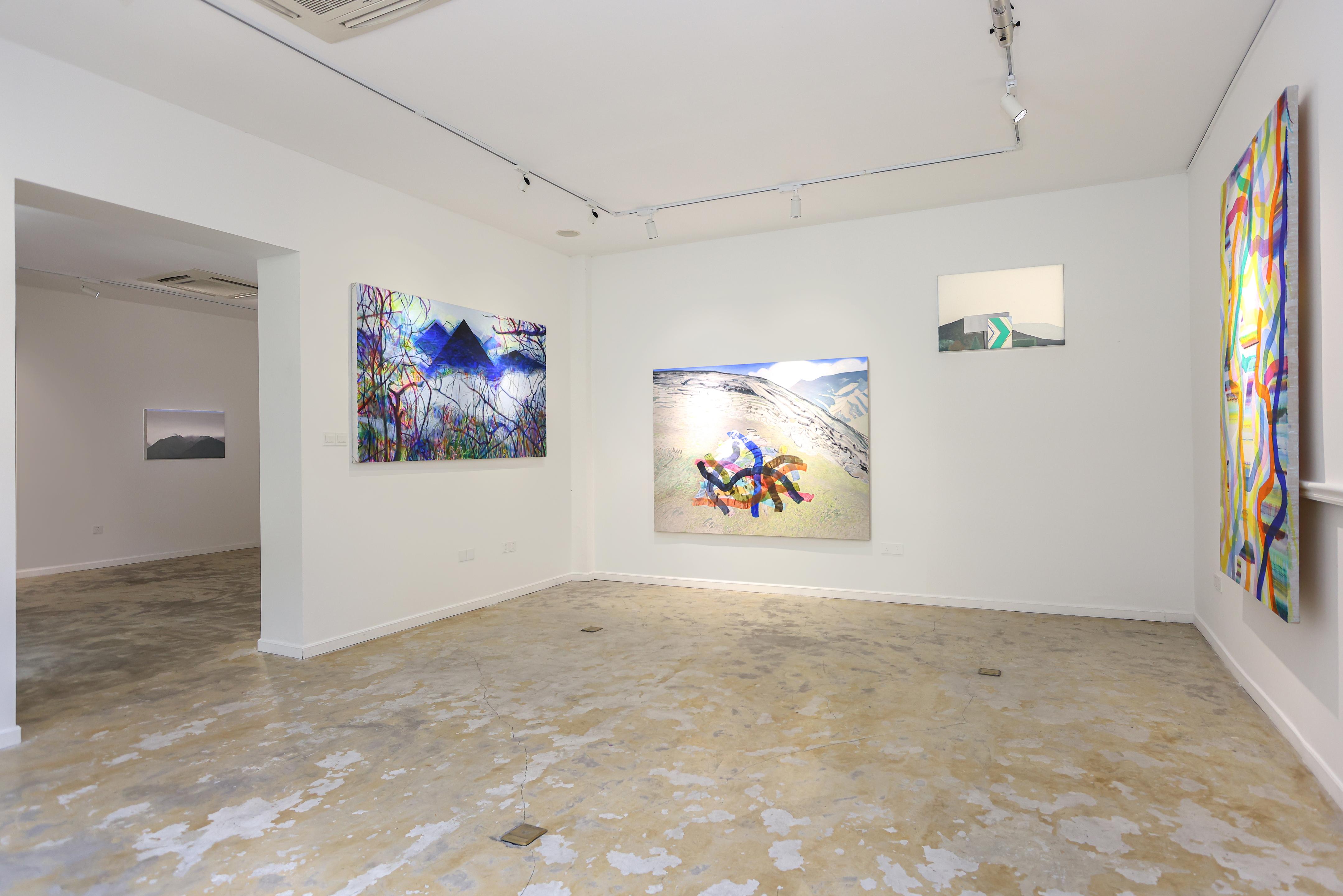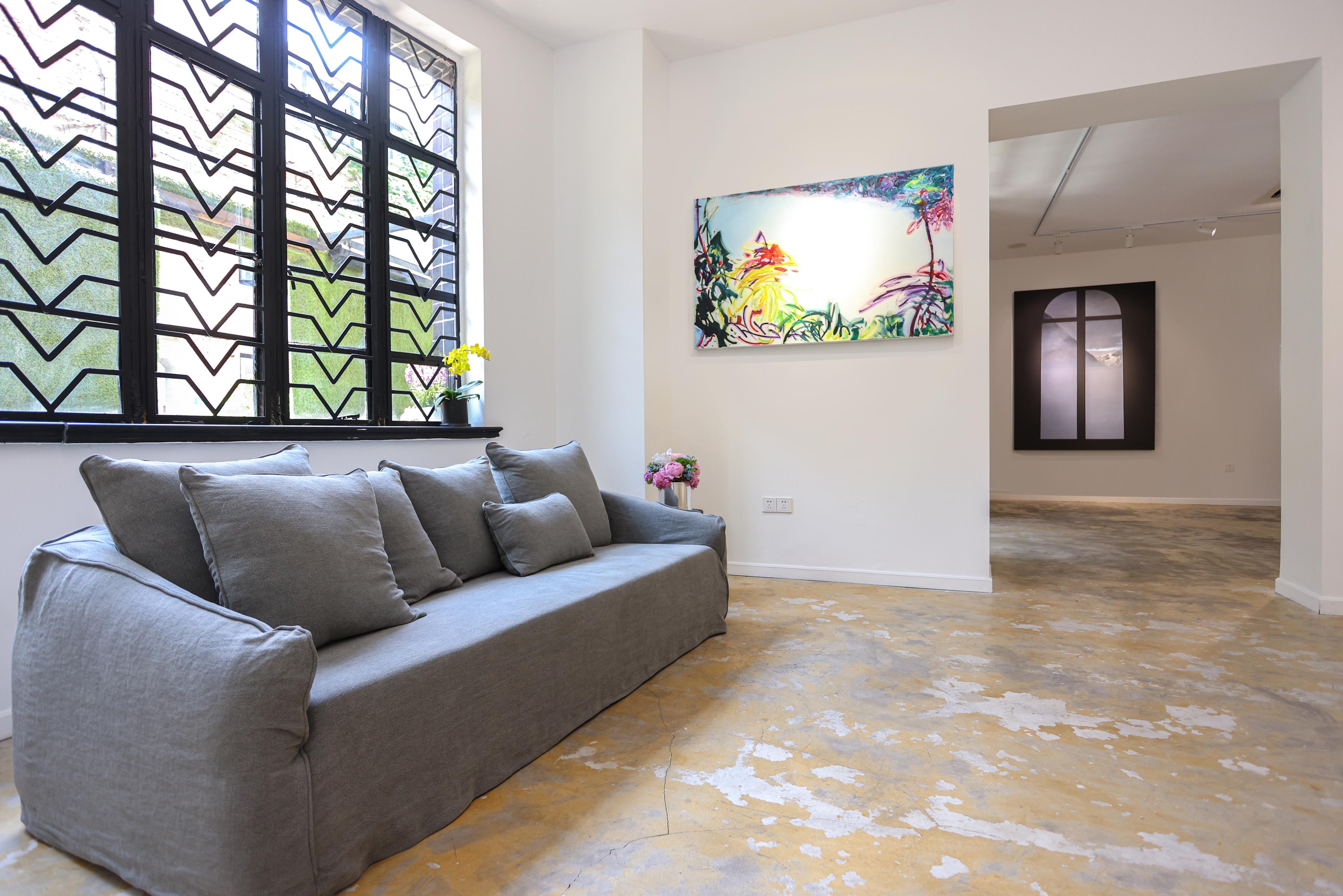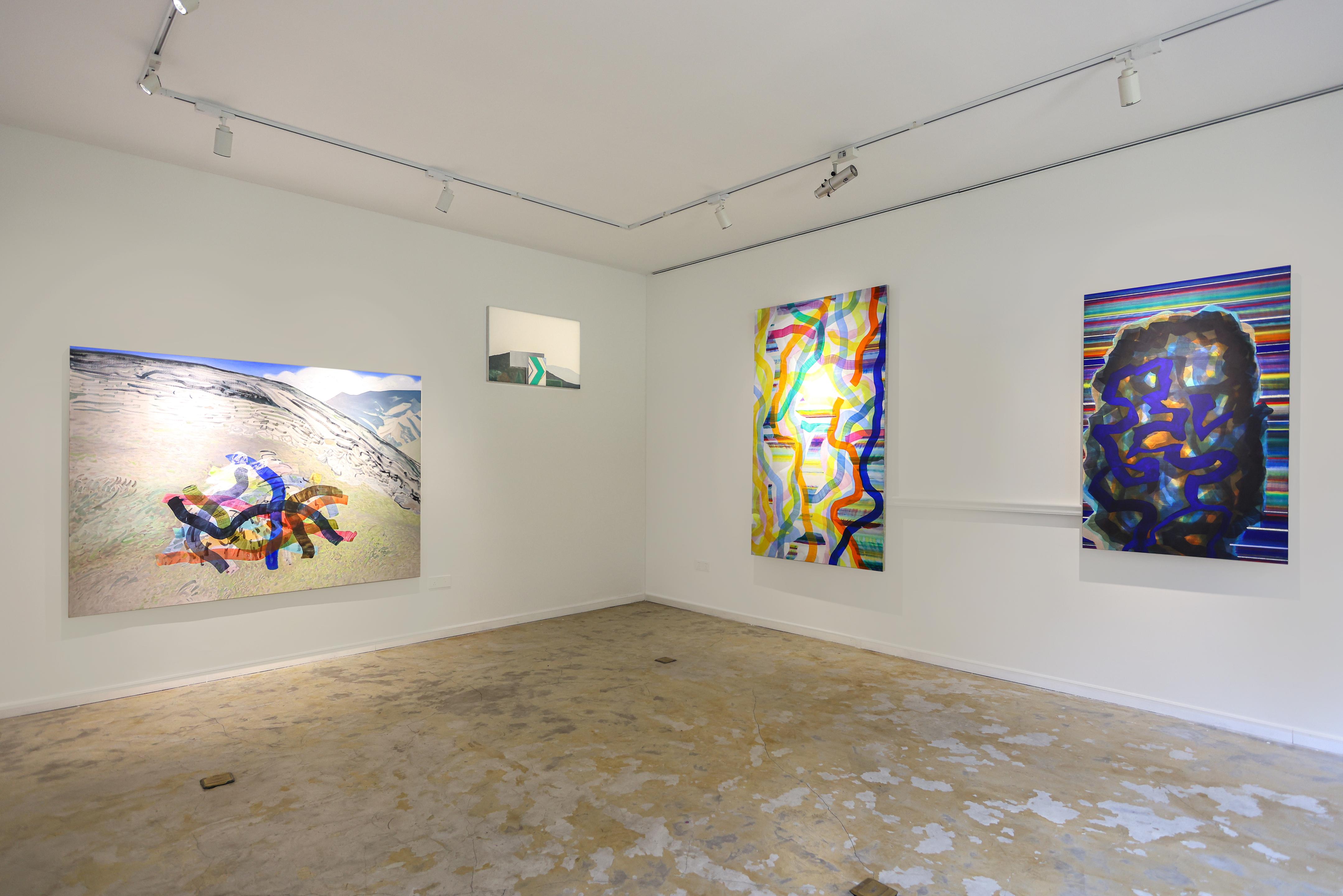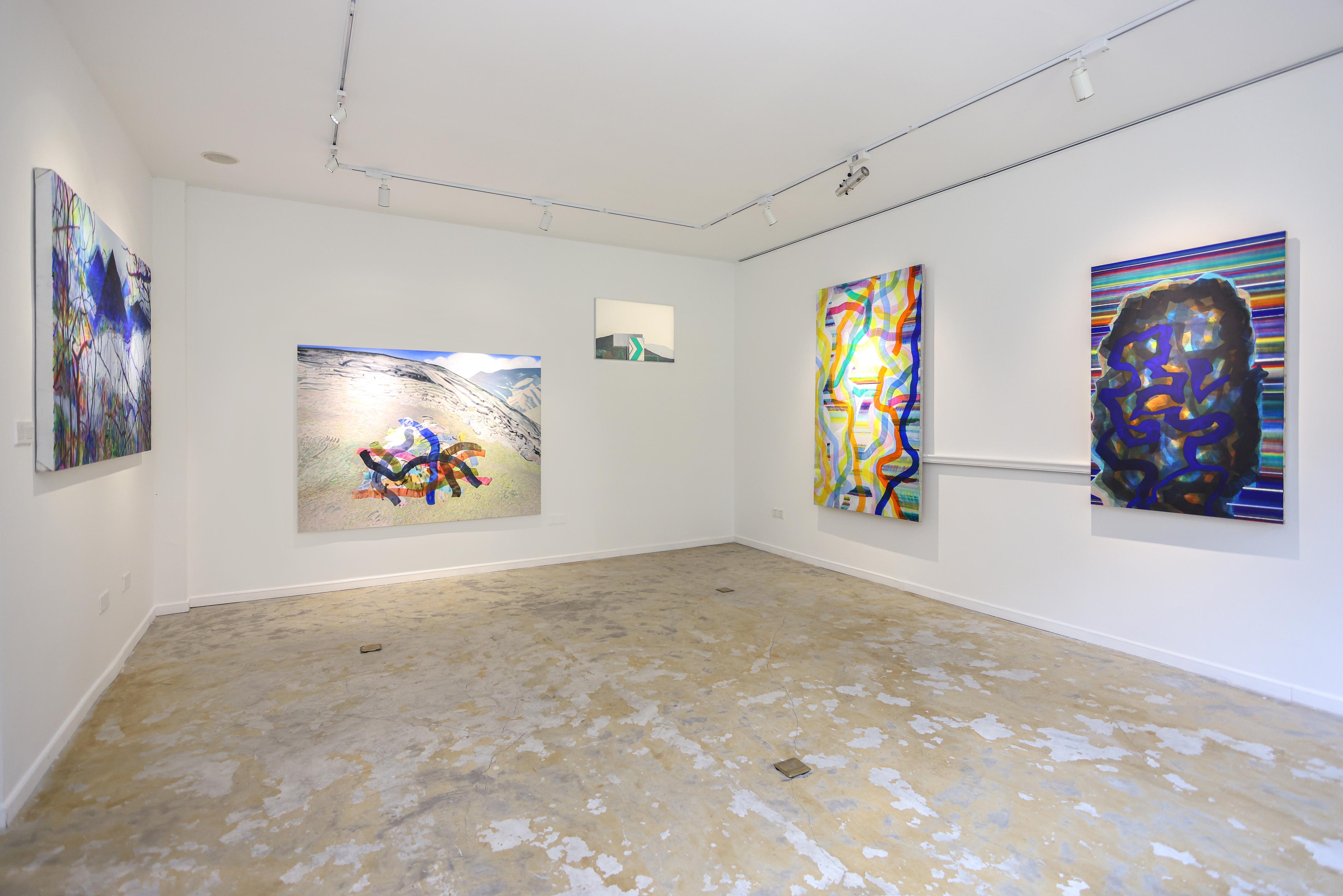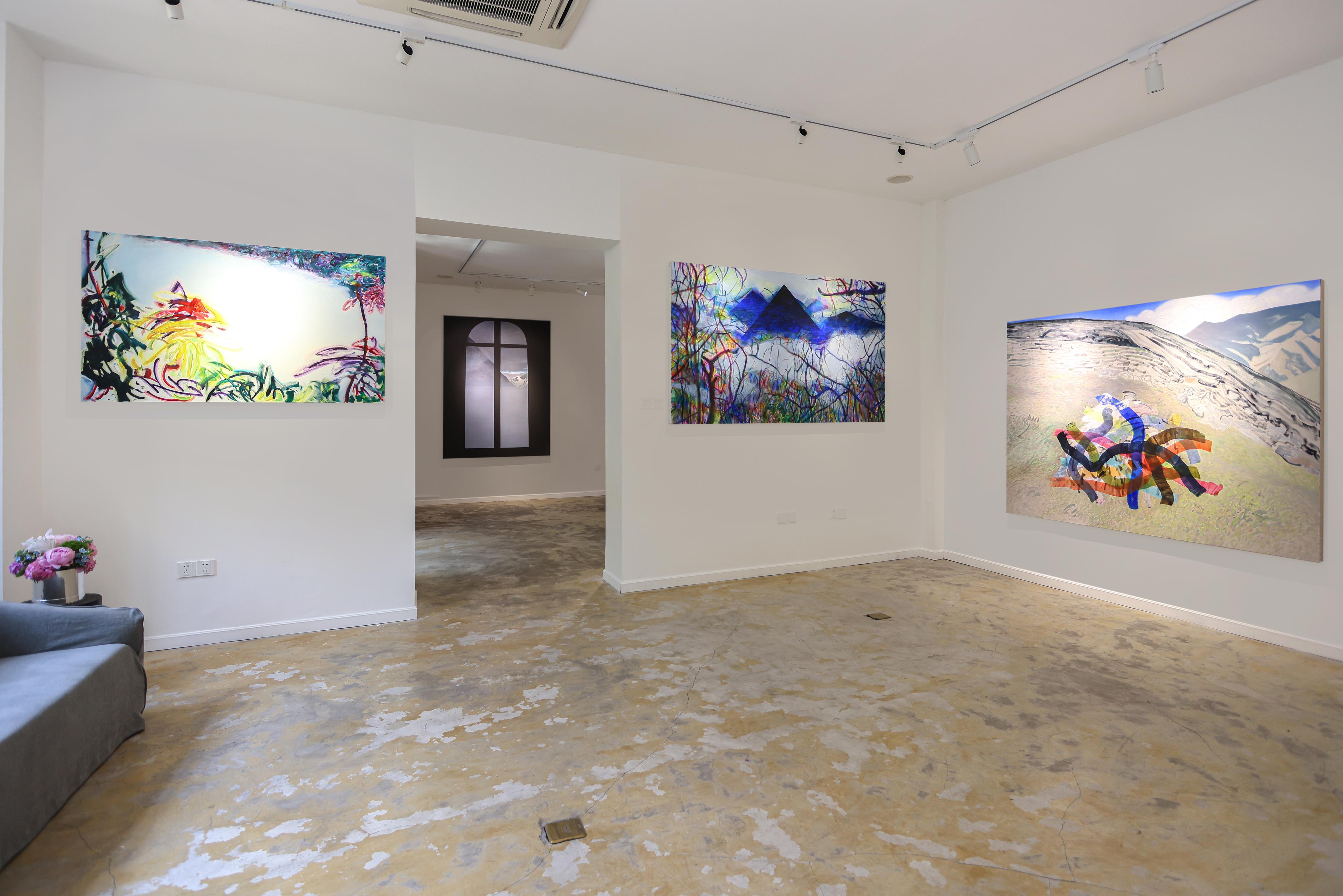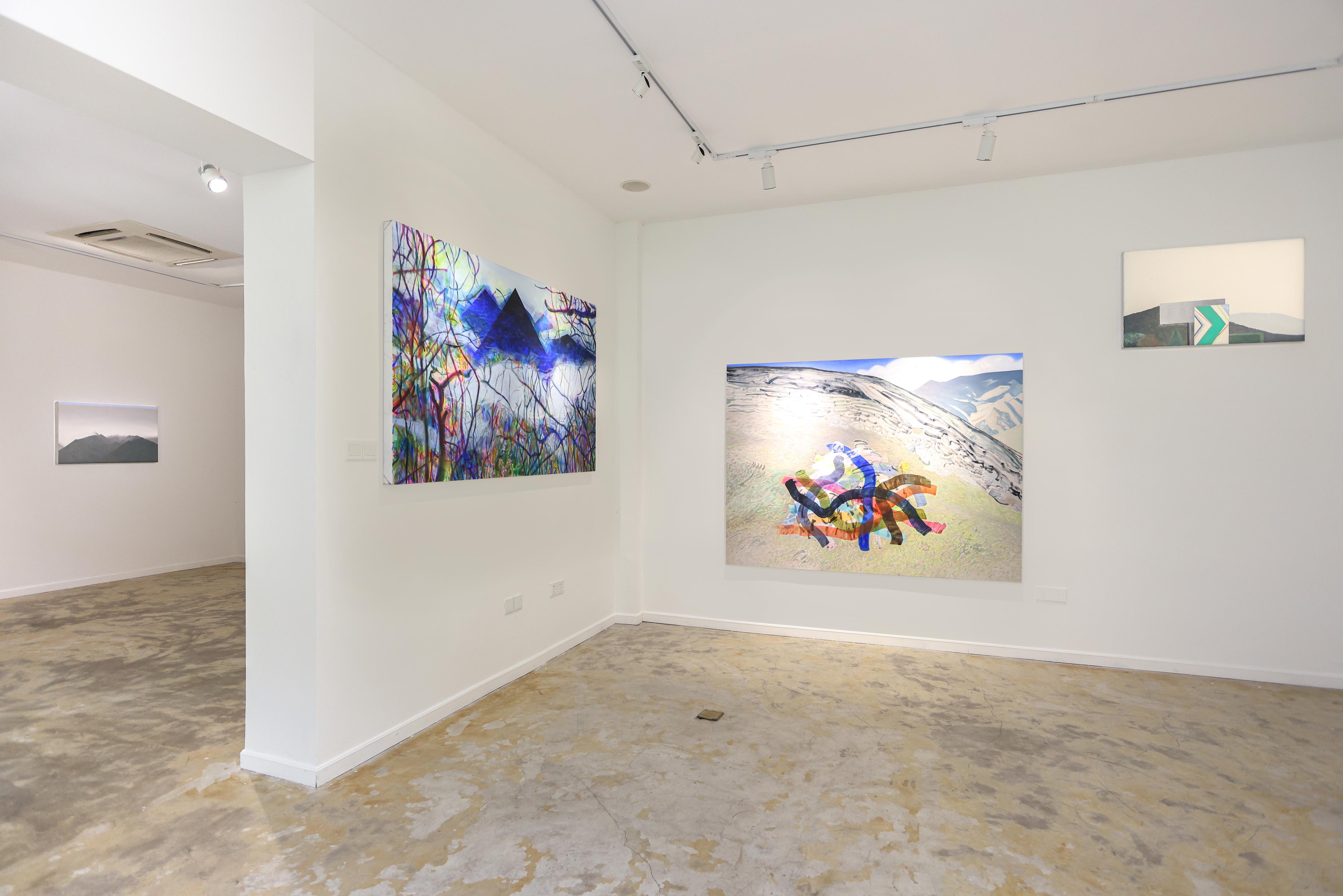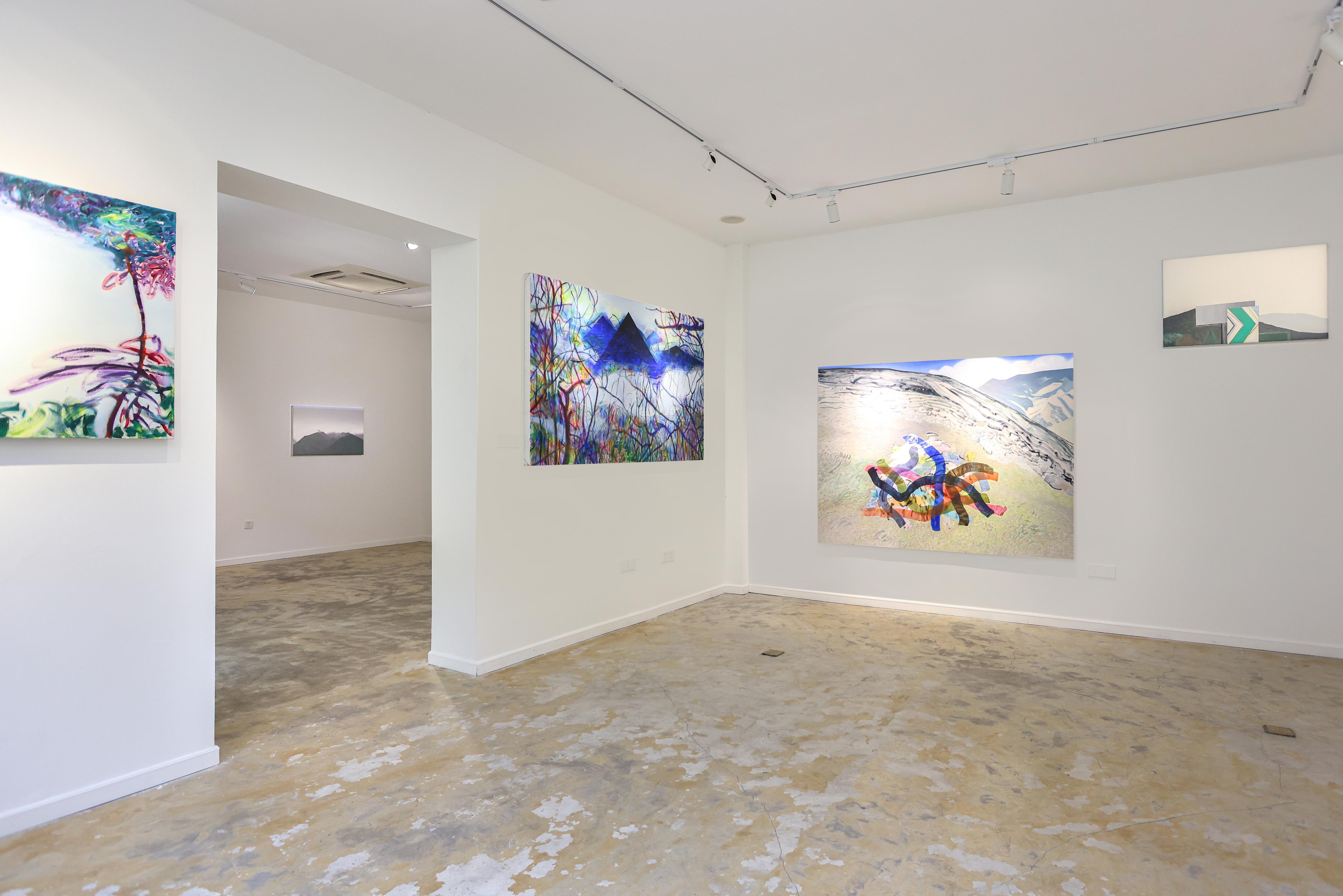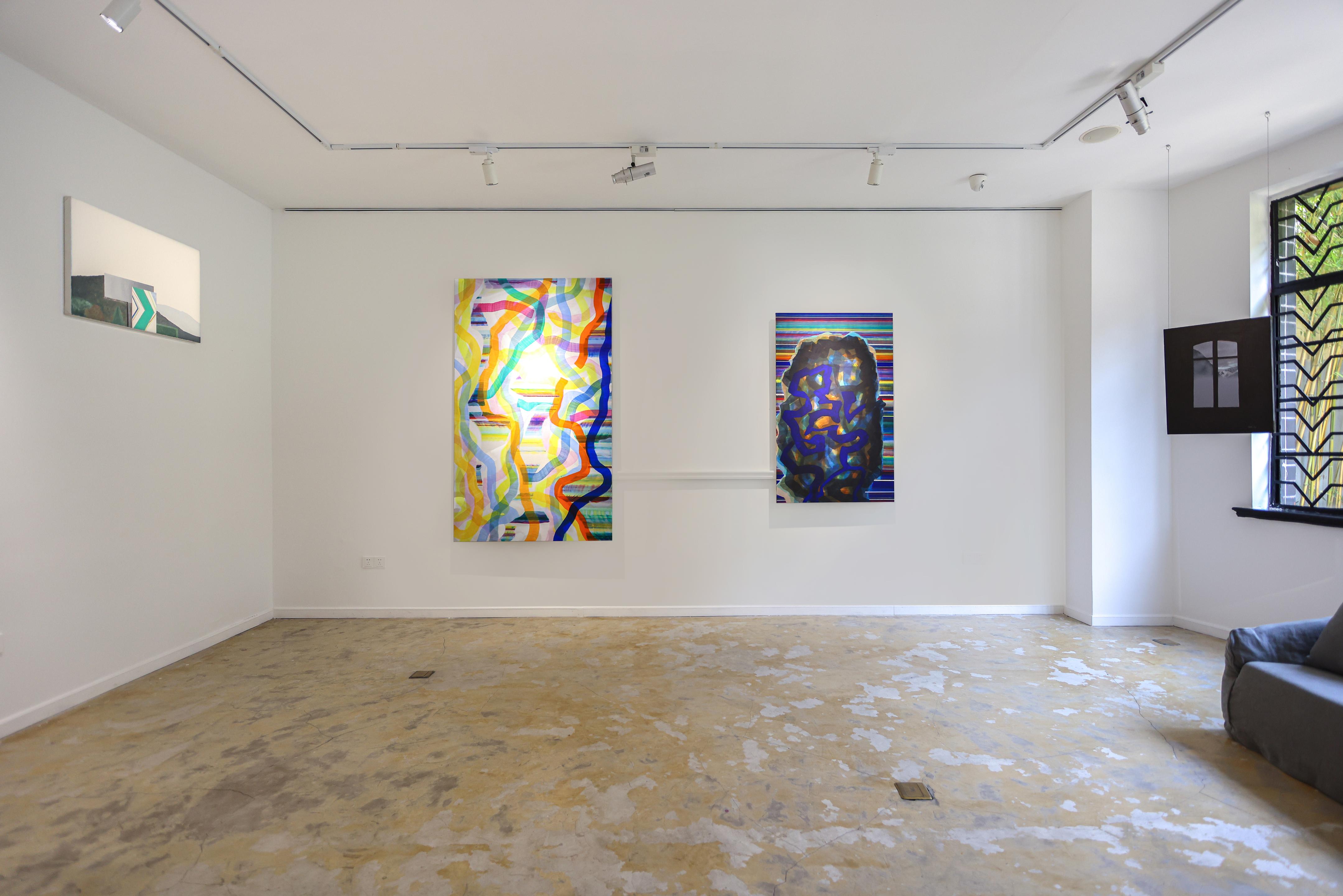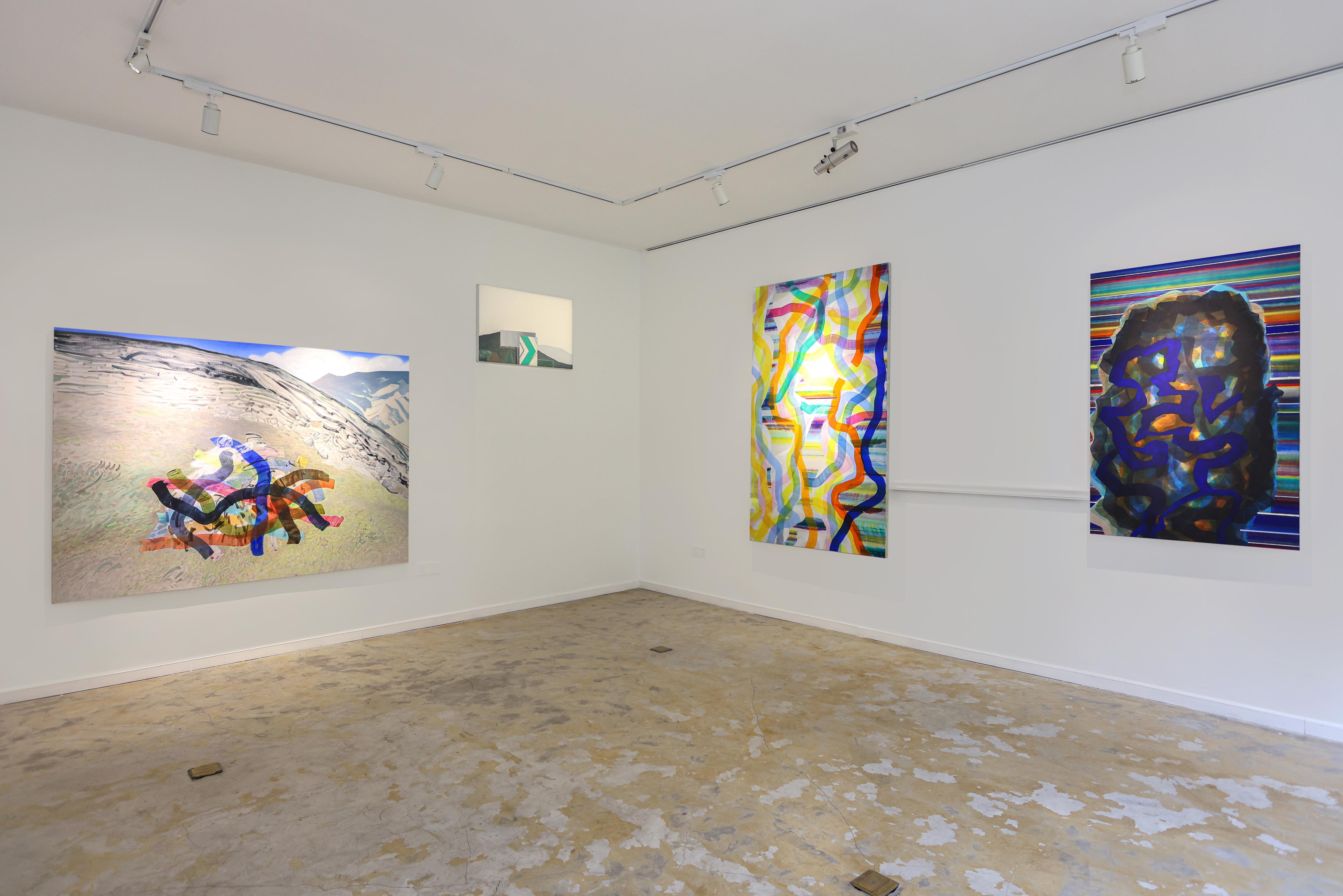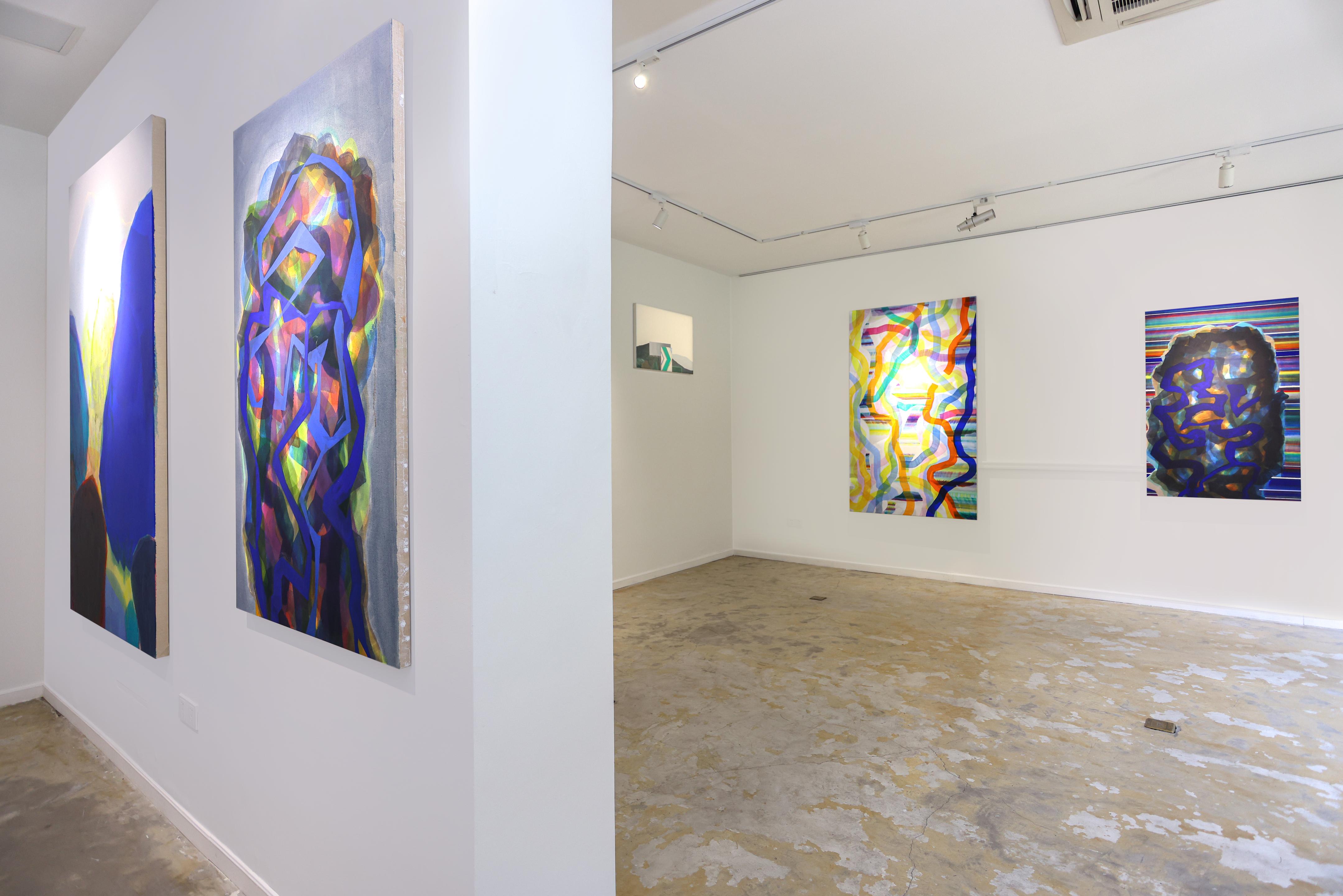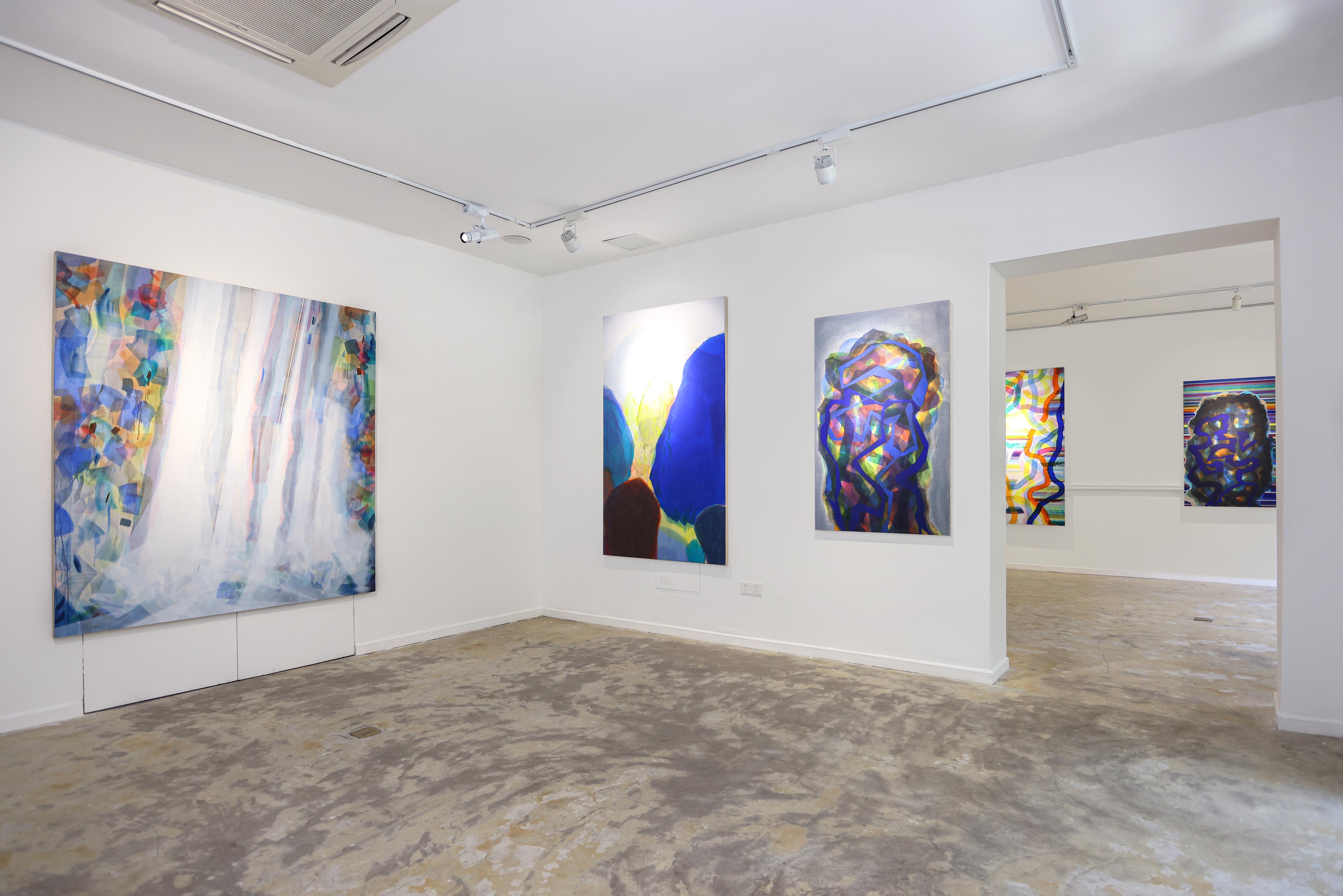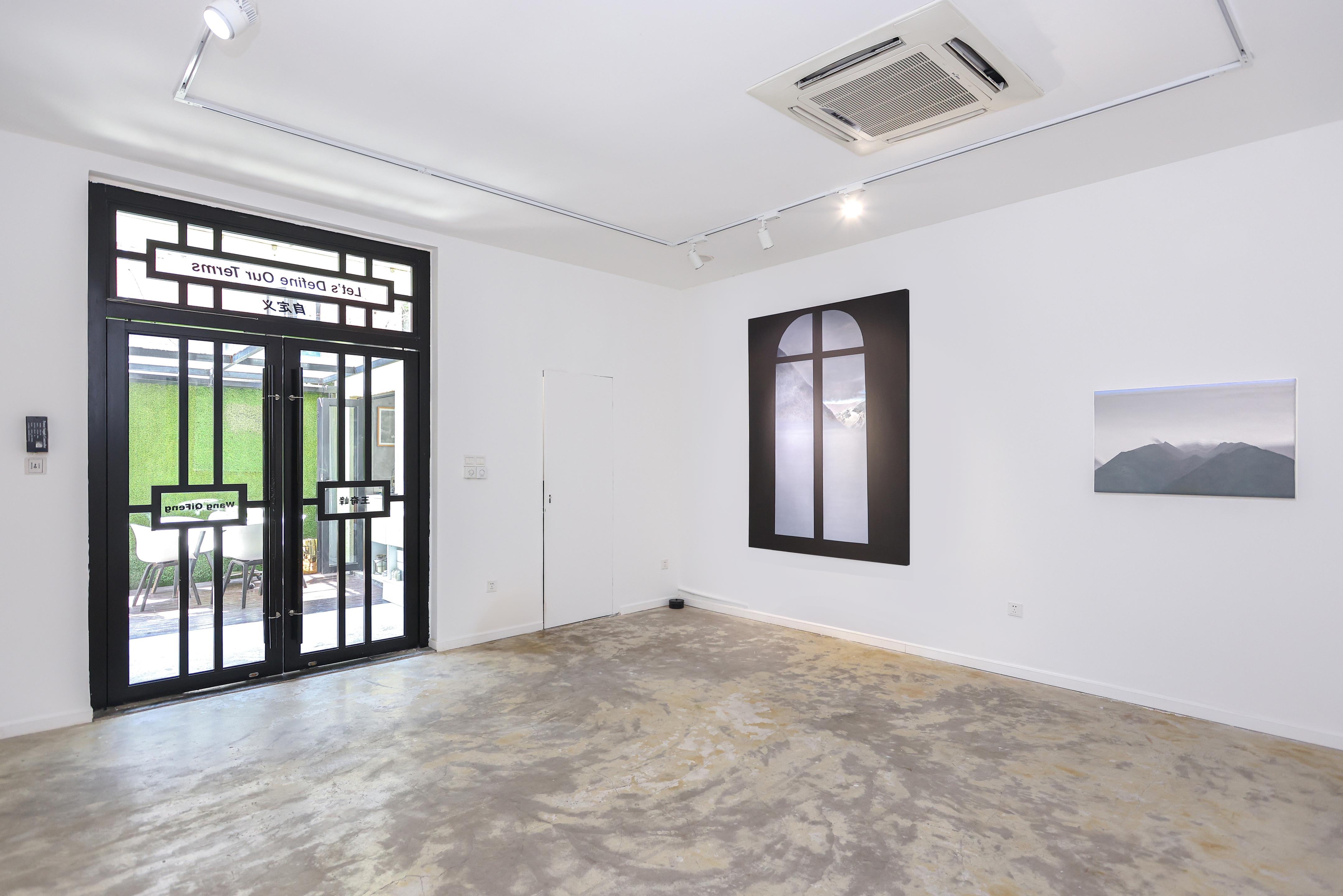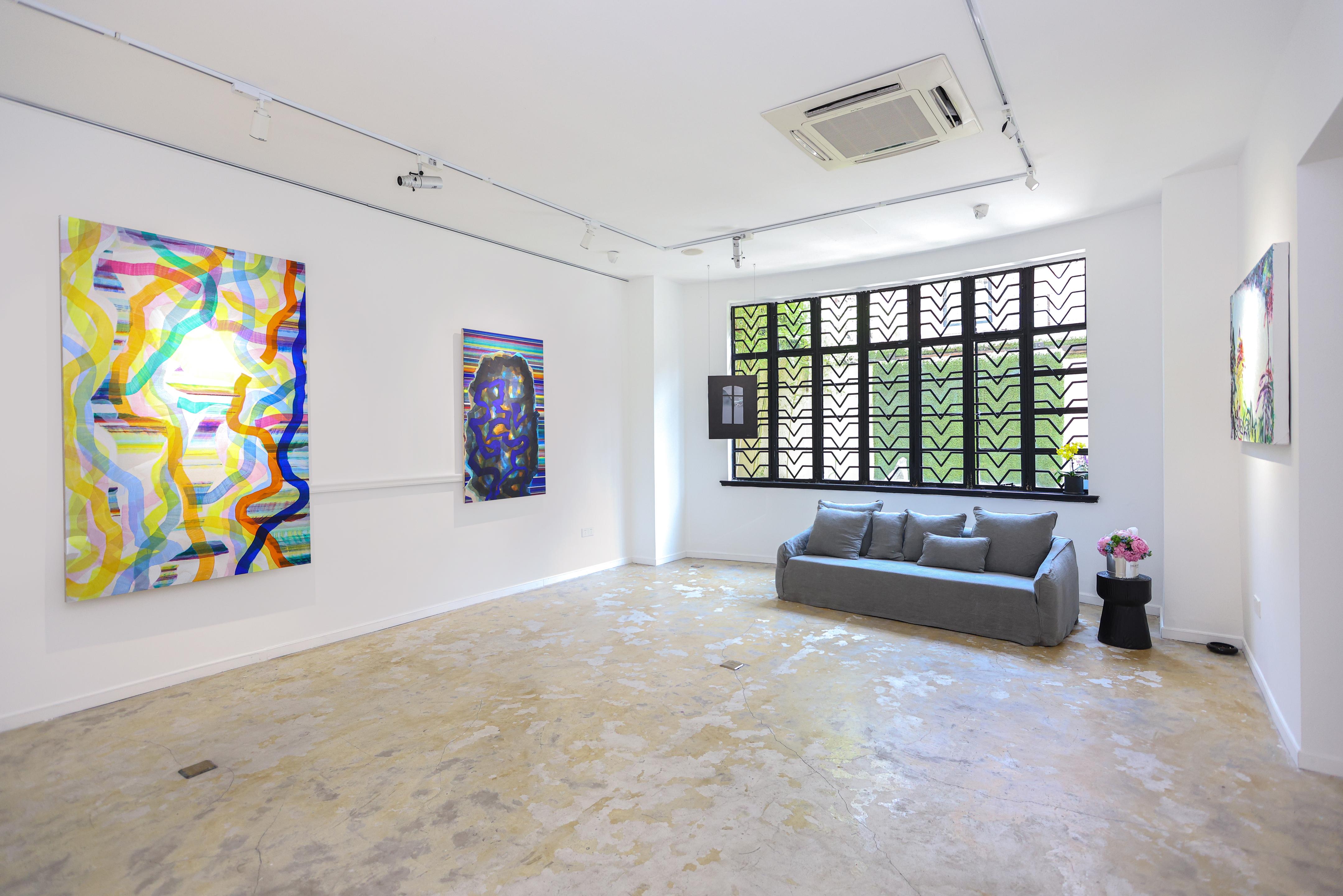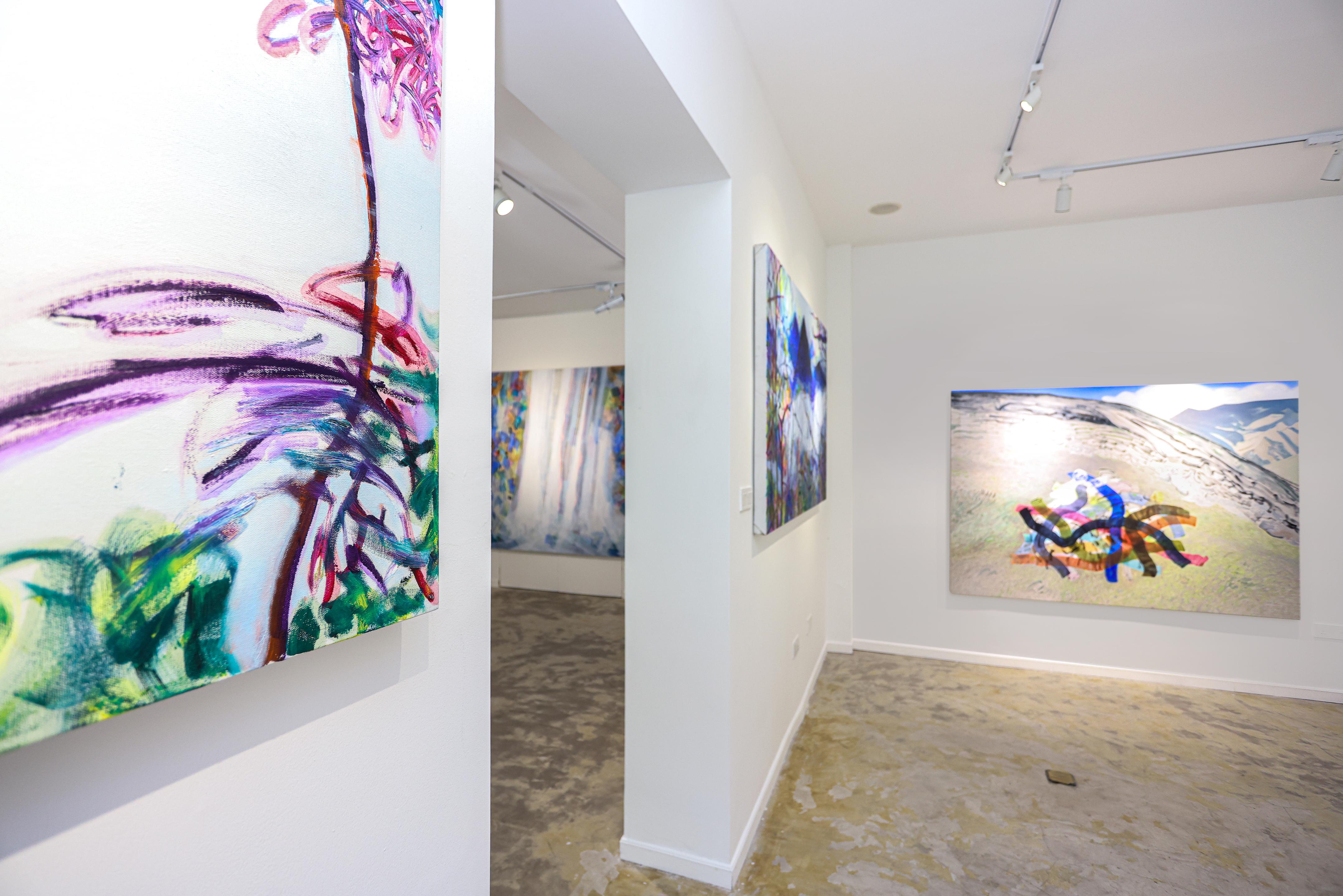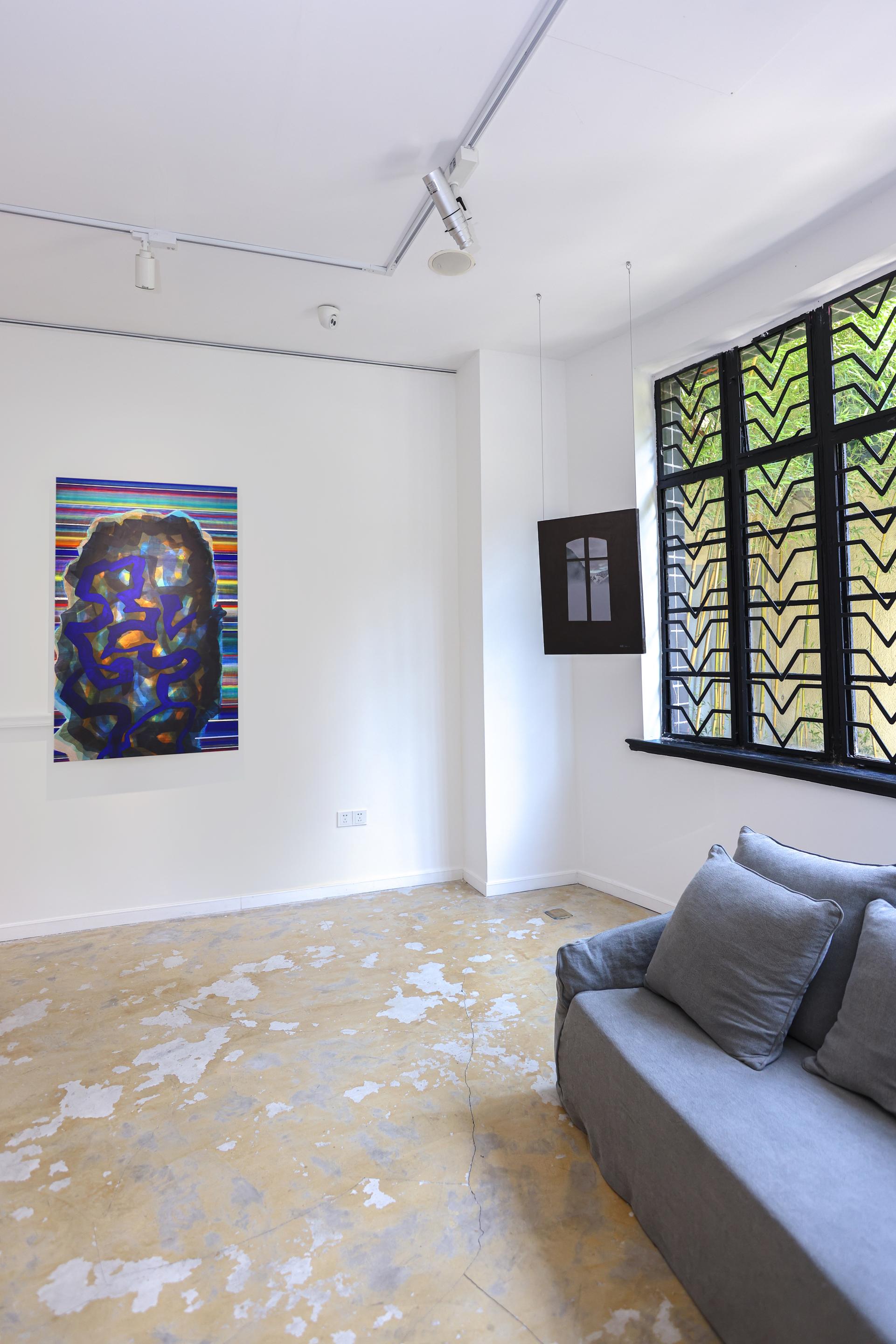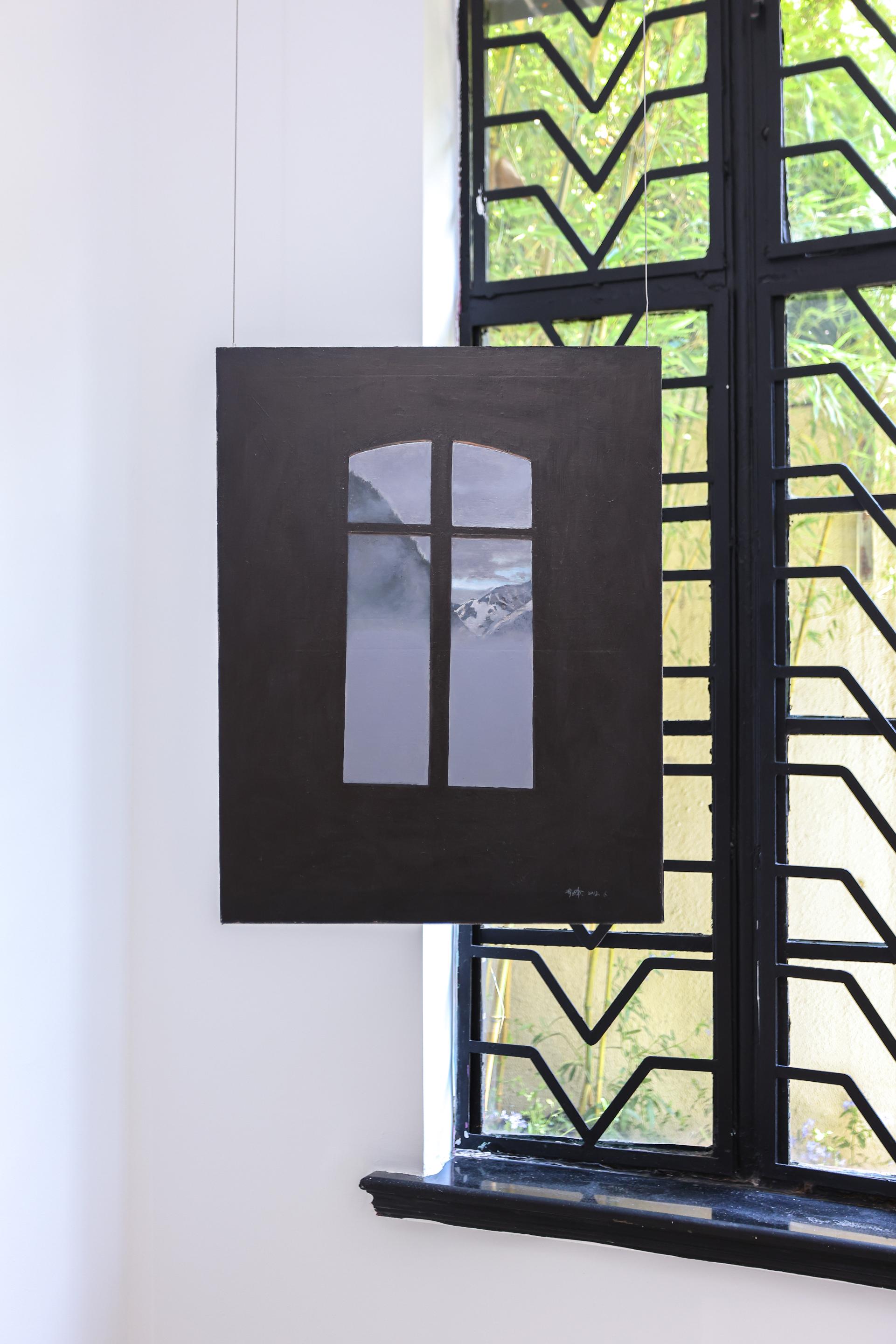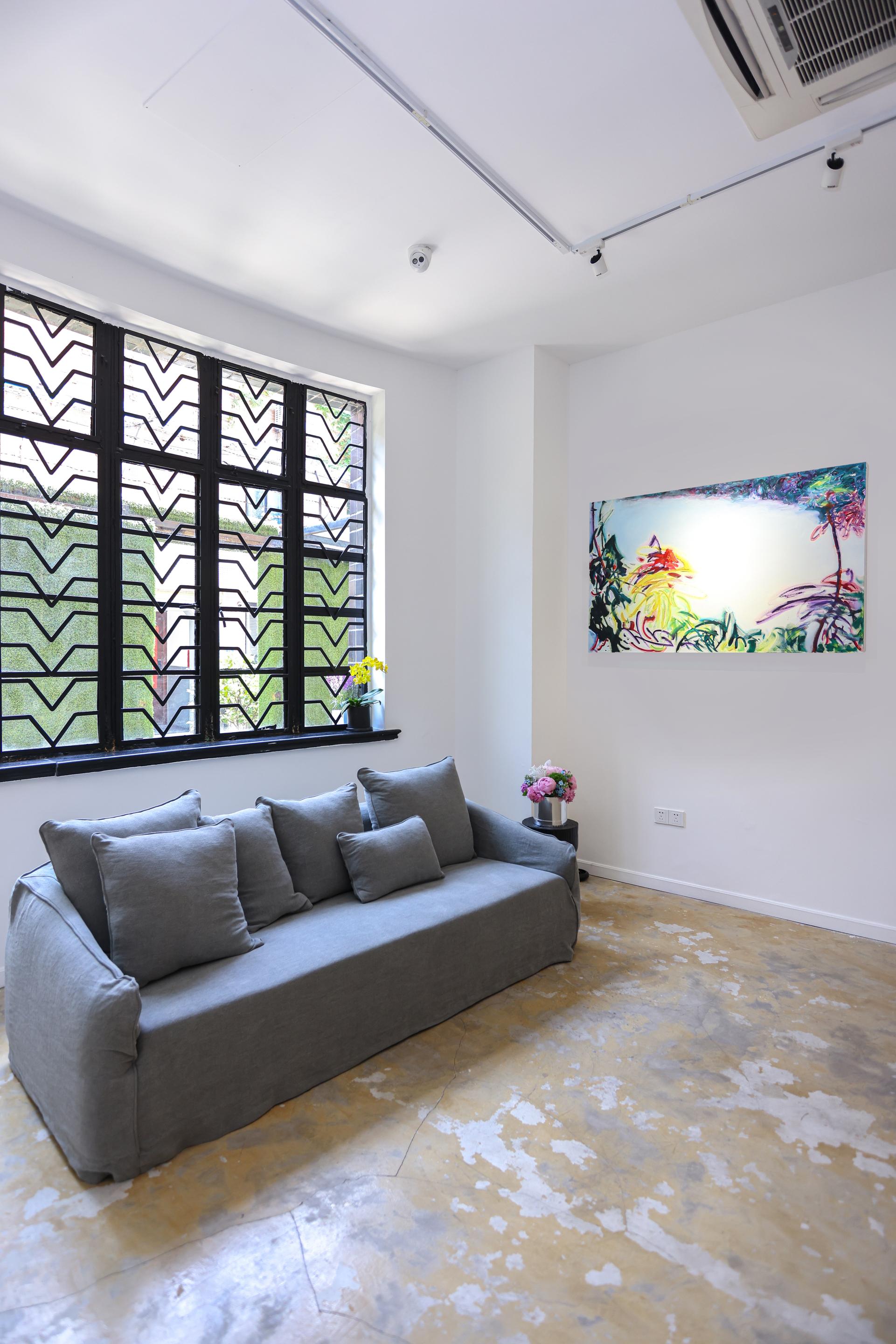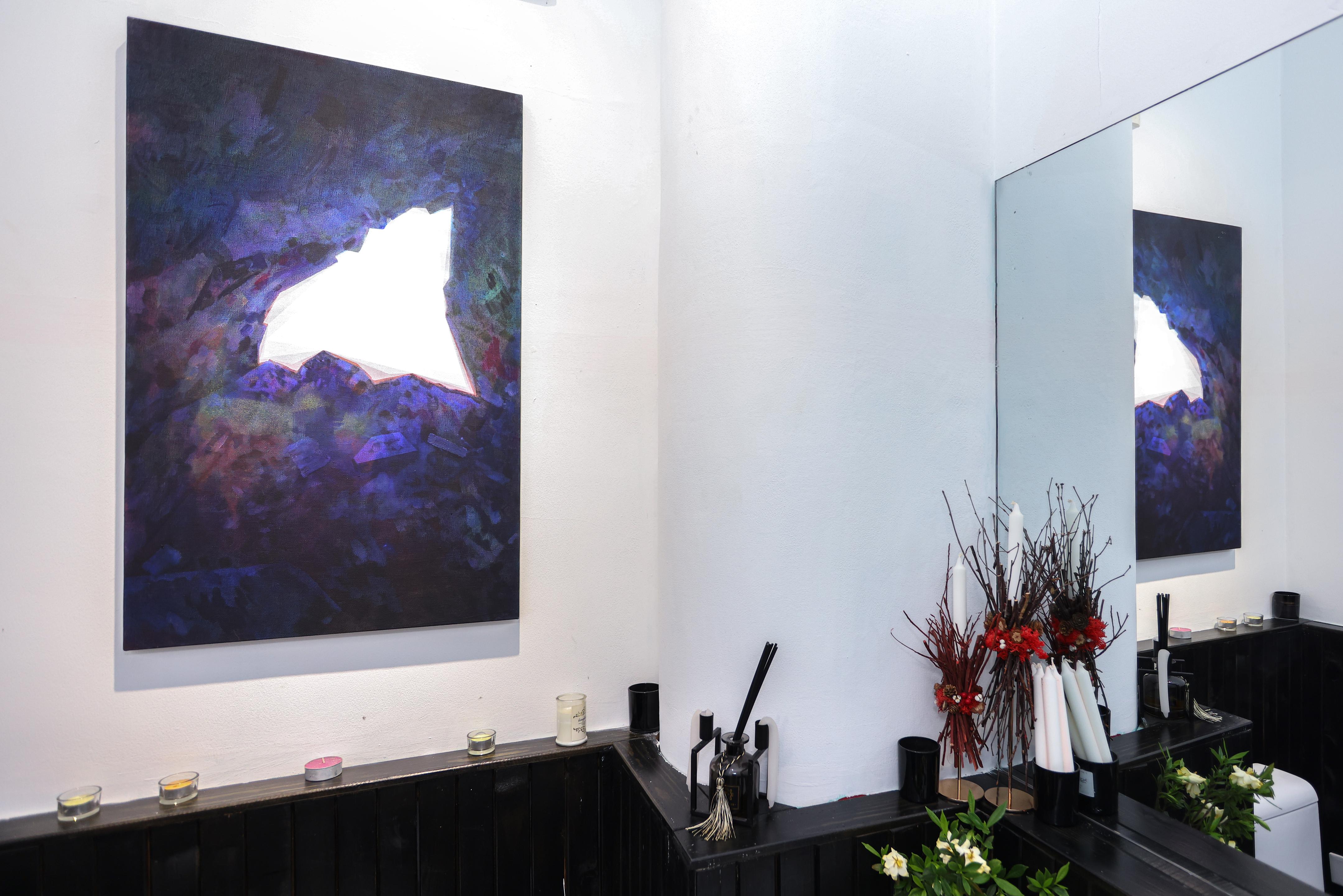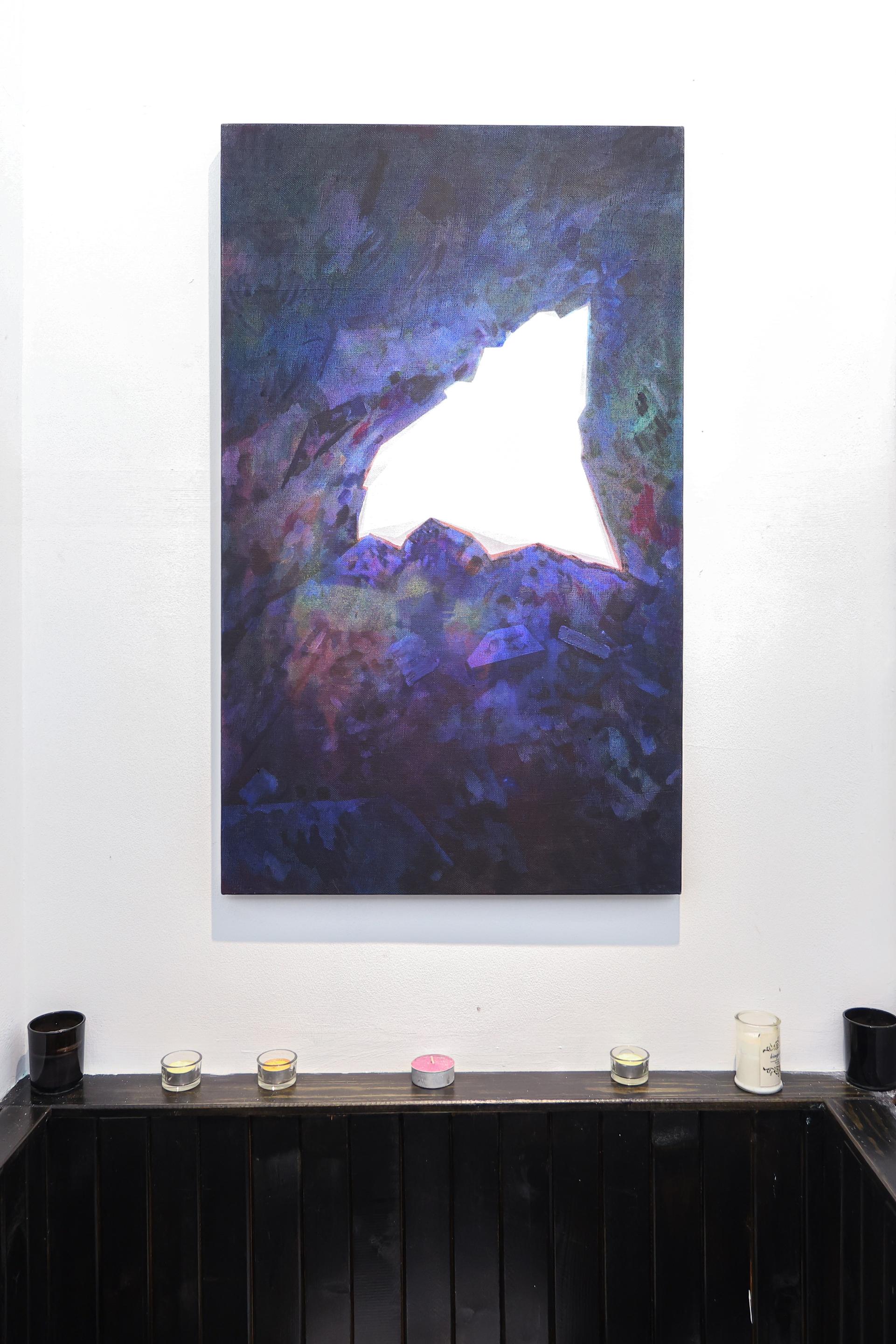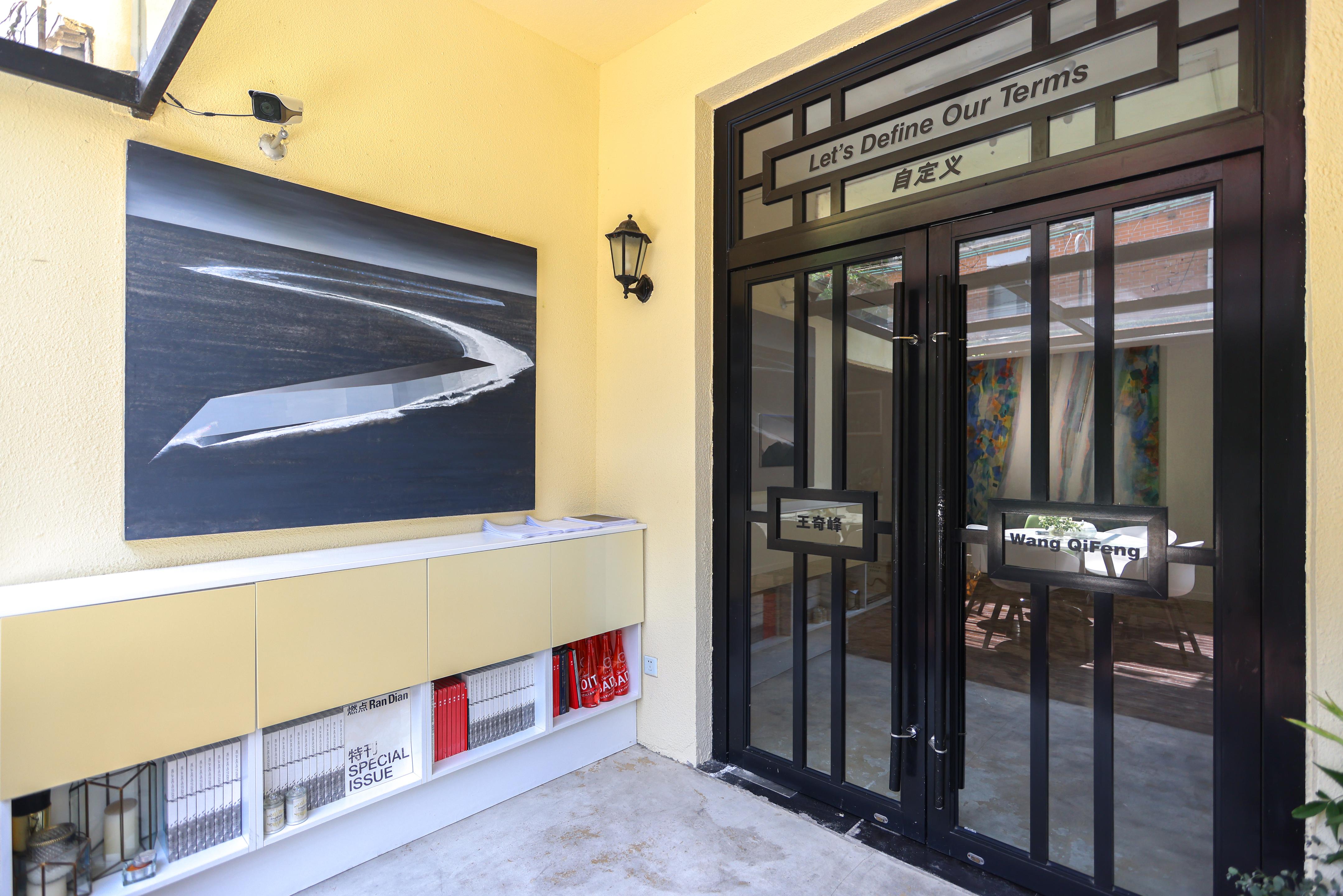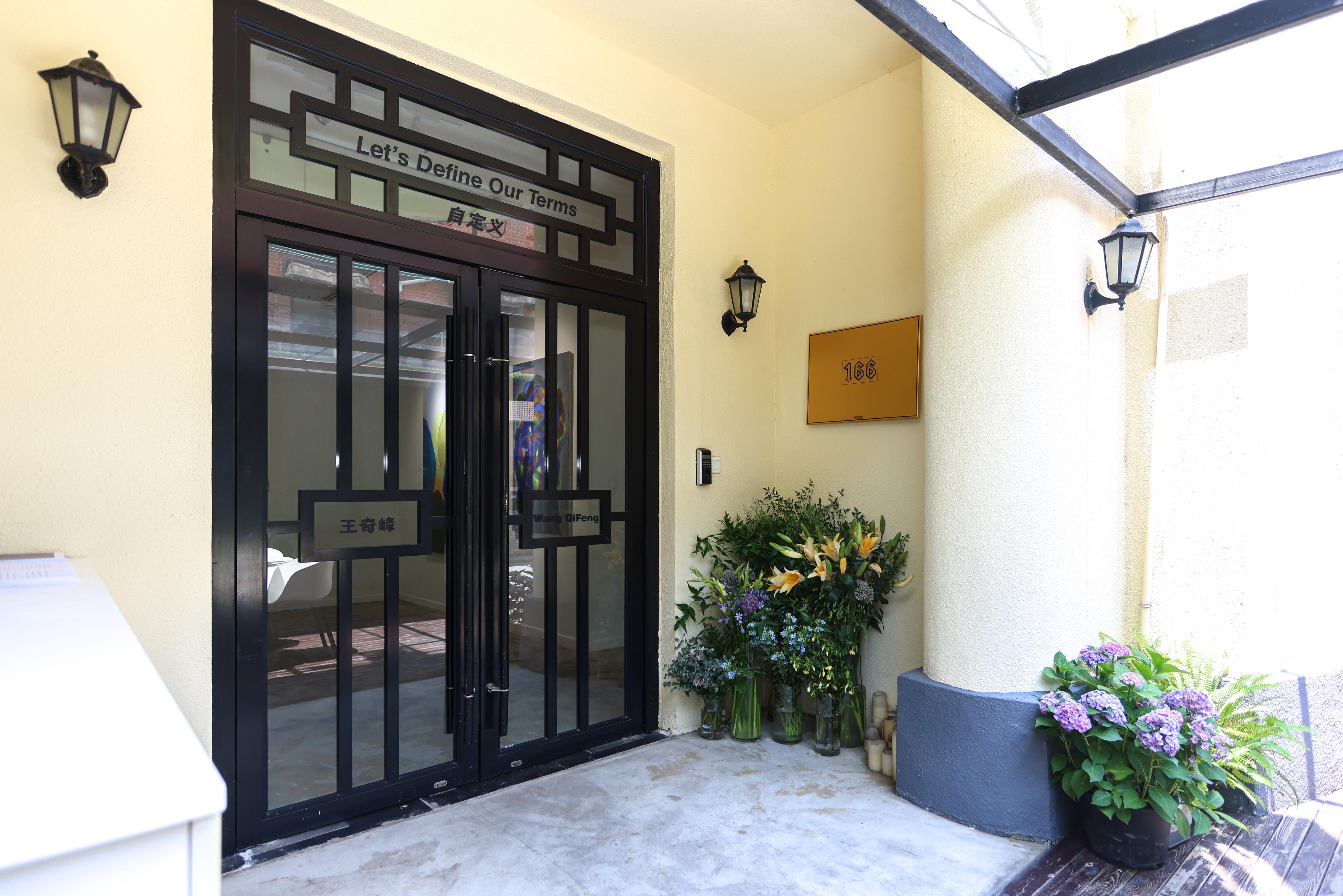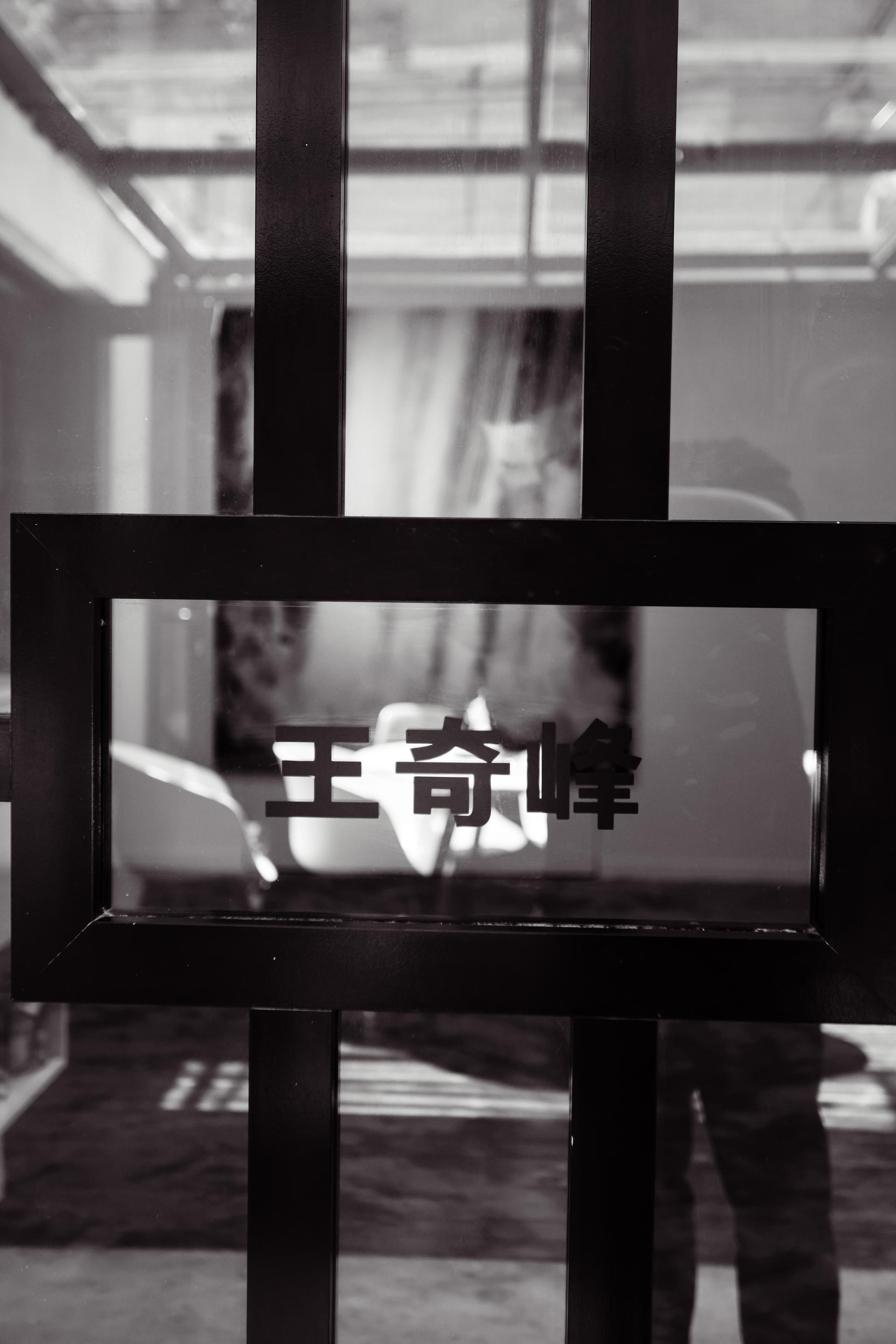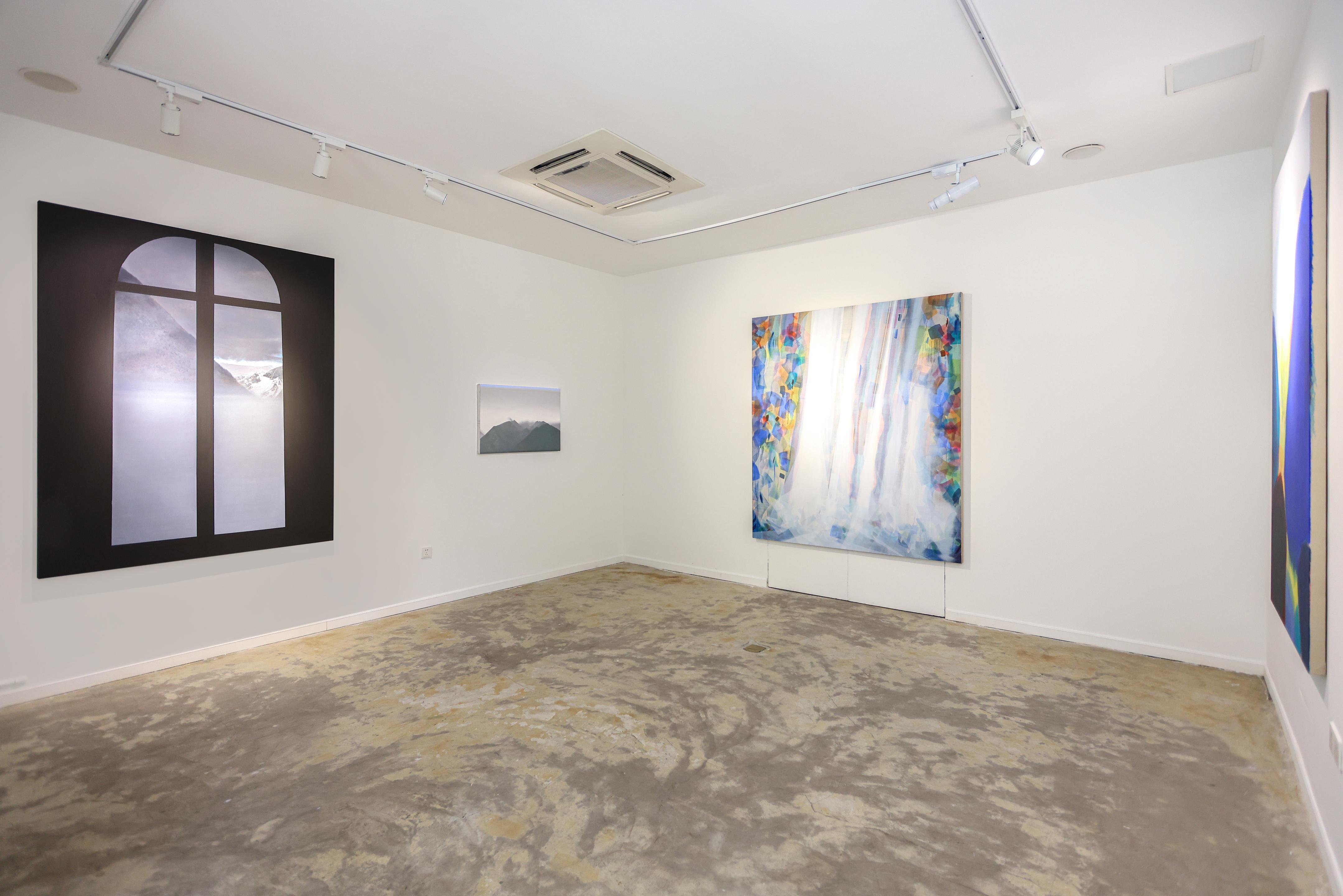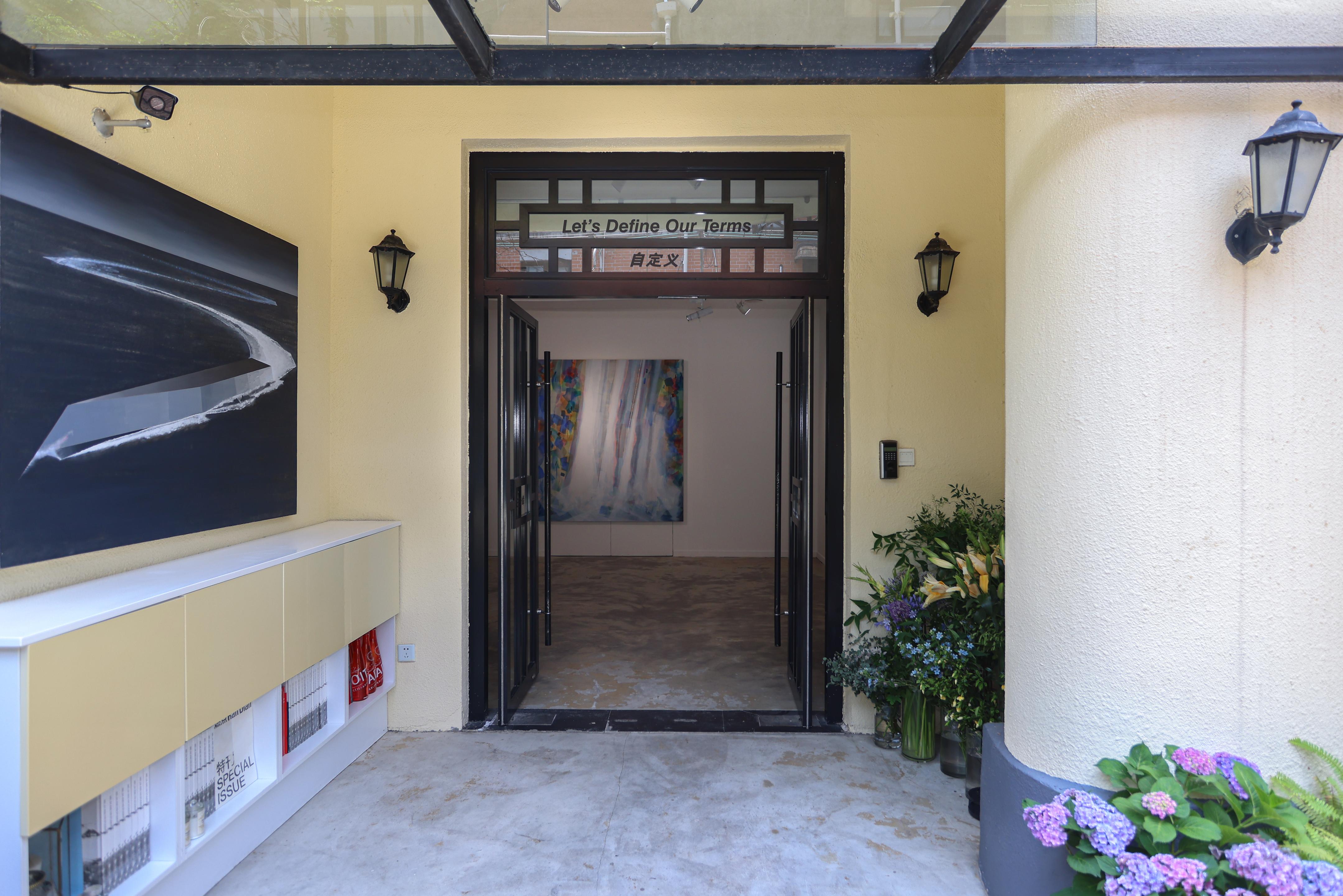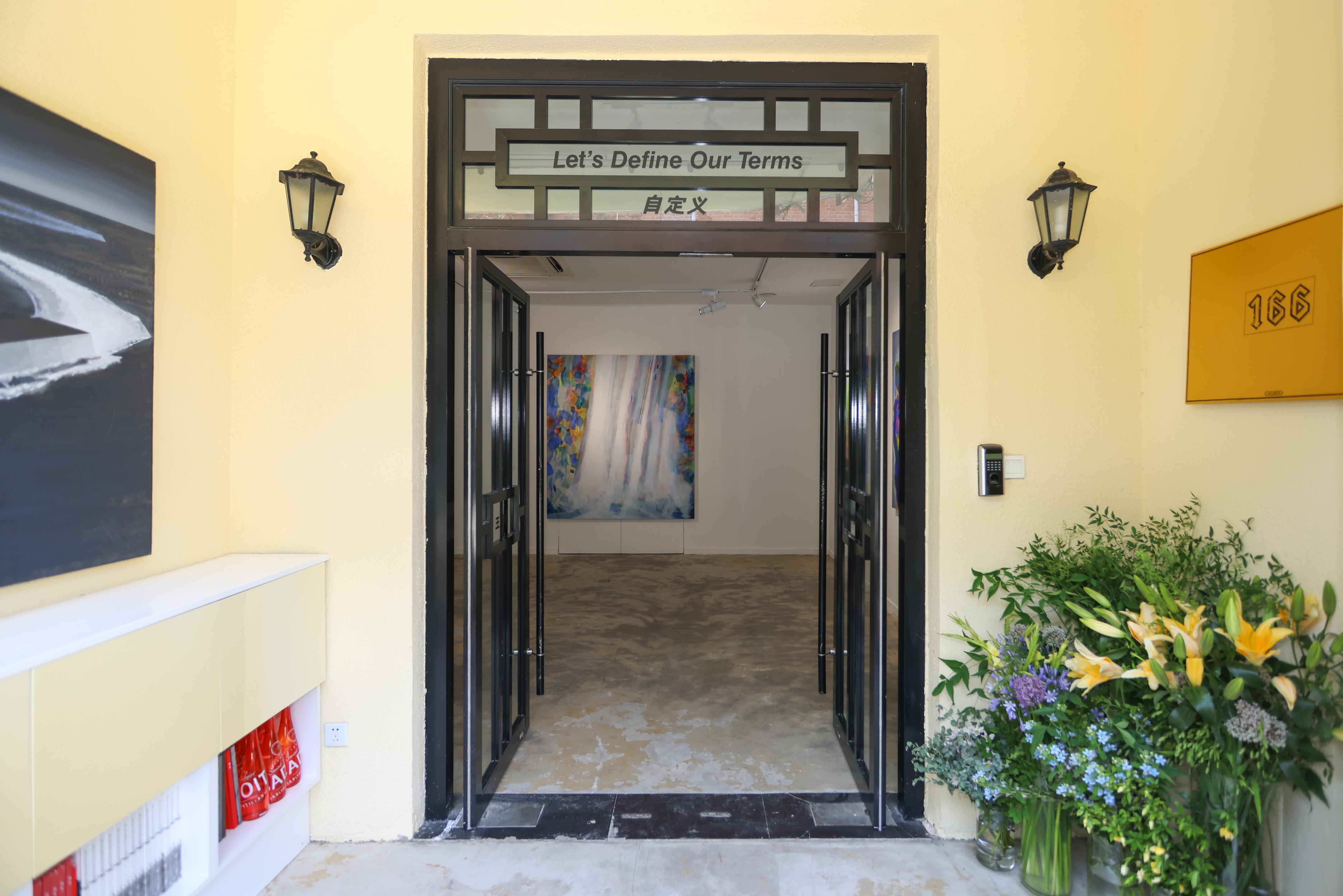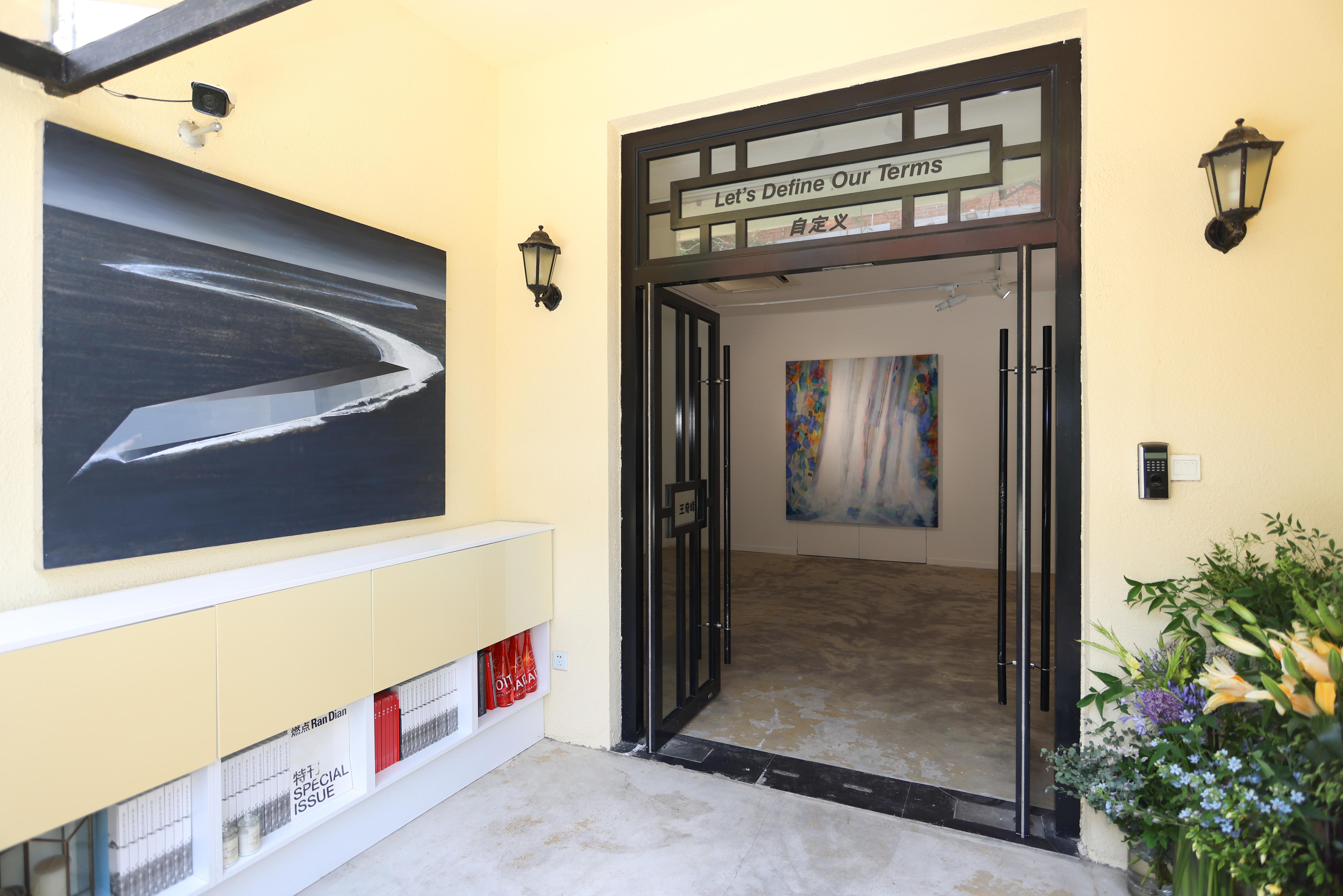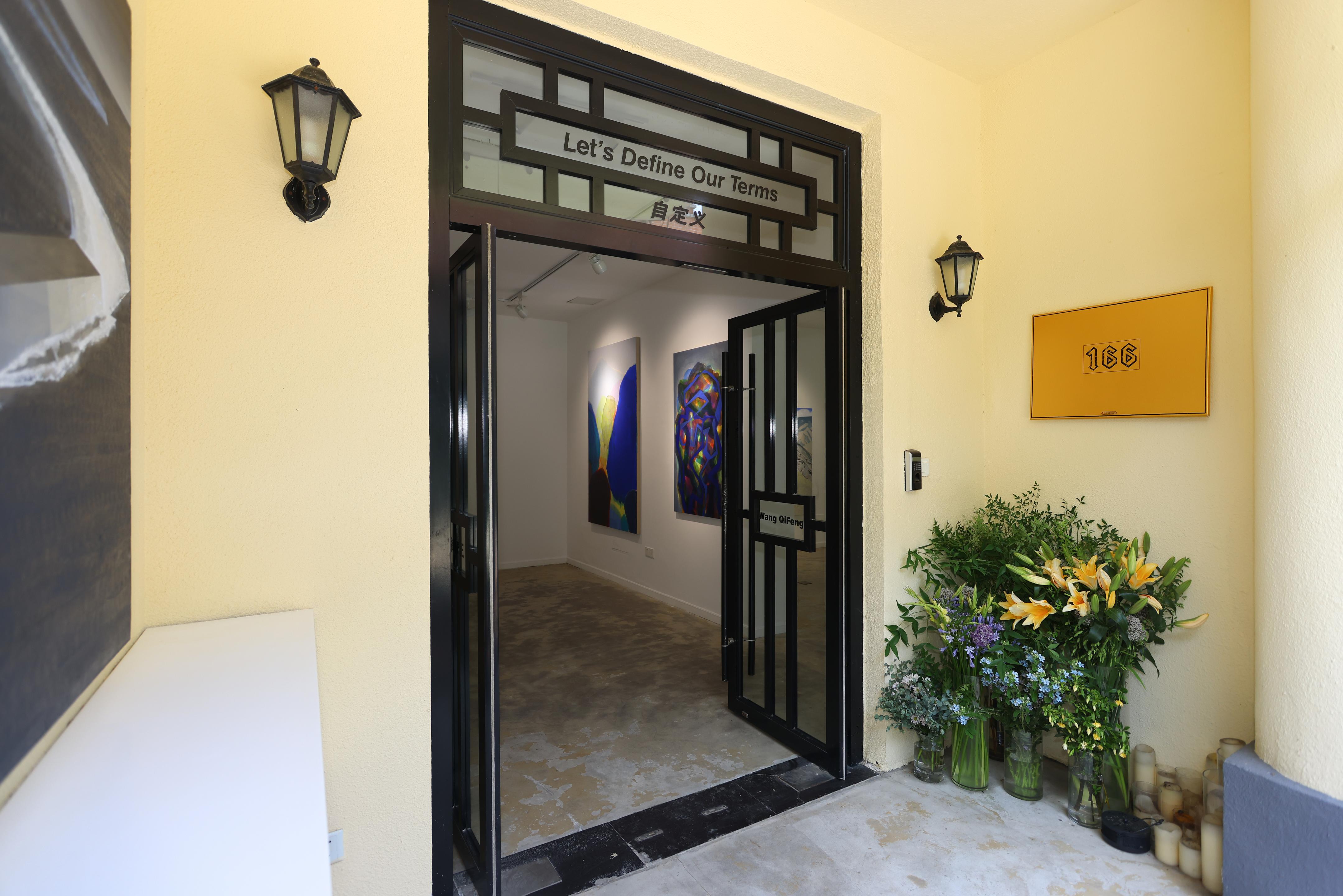Why would any of us take up the challenge of the genuine language of fine art when we are bombarded by so many iconic alternatives? Why dwell on vocabulary such as the selection of line or color? Why trouble ourselves with whether an artist’s choices function as a timeless window?
Wang Qi Feng’s work over the last decade demands to be viewed in the context of these questions and it is of little consolation that he refuses to define himself as an artist. The selection of paintings in the current exhibition, even with the constraints of limited space, might at first appear to be a open exploration of expressive forms - an artist trying to find his voice. Not true. The linear structure, the selection of color and the use of pictorial interruption, for example, all follow rules of measured consistency.
Consider some of Wang’s repeated pictorial themes - the blue horizon, the intrusion of abstraction or the descending mountain facade. These recur representationally both in Western and Classical Chinese (non-perspectival) terms but also in the vocabulary of flattened formalism. Individual works may reference celebrated moments of expression in the plastic arts but this is by no means a pedantic conceptual exercise. Wang is in command of his terms and his clarity comes from their consistent and uncompromising application. The result are works of extraordinary unique deftness and honesty neither seduced by the iconic nor stained by reference or repetition.
In the current market art is a gravity defying phenomenon pleading for a key to accessibility. For those in search of instant enlightenment, there is plenty on offer. Take your pick from the Zen menu of flat, cartooned, polemical or sprayed on digestible nuggets. Those seeking engagement with work in the longer term may see themselves losing a war of attrition. Wang’s beautiful cache of expression may not permanently stall the inevitable but contributes mightily to the vision of what art might be.
在今天这个铺天盖地充斥着各种偶像标识性选择的时代里,为什么还会有人去挑战艺术的纯粹语言?还会沉湎于画面中线条或色彩选择的复杂词汇中?为什么我们还会不厌其烦地去思考艺术家的选择是否创造了永恒之窗?
我们需要带着这些思考开启认识王奇峰过去十年的艺术创作的旅途,道路崎岖,而他拒绝用艺术家来定义自己的言说,更给这旅途增添障碍。本次展览呈现的艺术家甄选作品,尽管受制于我们有限的空间,乍看仍然可以让你体验到,这似乎是一个挖掘自己真实声音的艺术家不受限制的各种表达方式的尝试。然而再度推敲就会发现,这里的线条结构、色彩选择以及策略性的图像干扰等等手段,无不坚持着考量过的持续性原则。
让我们一起来看看王奇峰画中反复出现的主题:蓝色的地平线,趋于抽象性的图案和下行的山脊,这些形象穿越具象领域,无缝连接起中西方的绘画历史传统,同时也拥抱了艺术史上趋向扁平化的形式主义绘画语言。王奇峰的作品尽管具有对艺术史重要时刻的致敬,但重点是他从来不是呆板教条地从事学术练习,而是通过他把握的强烈的艺术语言,釜底抽薪凝练出他的清晰思路和风格。他作品的精准性和真实性,不受流行偶像的影响,也远离重复和引用的怪圈。
今天的艺术市场以违背地心引力的自然法则运作着,人人都想得到一把解密的钥匙。对于那些追求一看就懂的艺术品的人来说,修行单上的选择可太多了:平滑的,卡通的,吸眼球、喷绘的等等直白好消化的速食,而对于那些寻求作品能建立更加深刻长久关系的人来说,好像要输掉了这场消耗战。王奇峰汇集了多种令人着迷的表达方式的绘画,或许并不会战胜永恒,但至少为艺术何为的愿景贡献重大。(翻译:王凯梅)

